- Plug-in hybrid drivetrain adds thrift and punch to 3er
- PHEV doesn't spoil the usual great 3er ride and handling
- Richly appointed and tech-filled interior
- PHEV compromises packaging
- No DC fast charging capablity
- $12,000 more than a fully electric i4
As the world turns its eye to electrification for greener transport, more and more manufacturers are offering a wider variety of drivetrains to choose from. BMW is one such manufacturer offering many drivetrain choices for its models, including the evergreen 3 Series mid-sizer. Offering similar performance and pricing – but, crucially for some buyers, electric range – to the popular 330i, the 2023 BMW 330e plug-in hybrid gives 3 Series buyers an option of electrification. Is it the 3 Series to choose? Let’s find out.
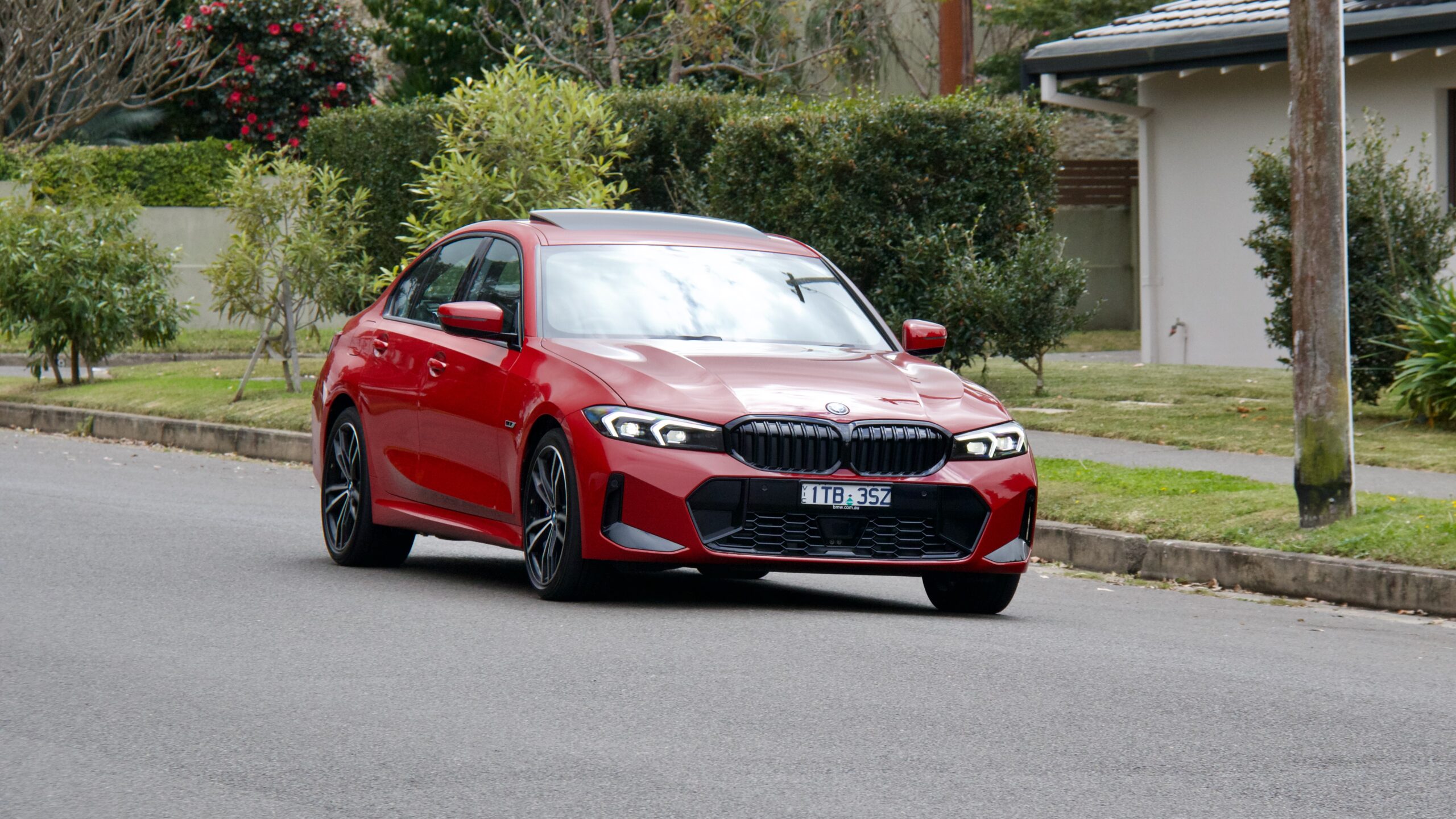
Priced from $97,400 plus on-road costs, the 330e sits in the higher end of the 3er range locally and is – unfortunately – only available in sedan form. It combines the turbocharged 2.0-litre four-cylinder petrol engine used in lesser 3 Series models locally with an 83kW electric motor driving the rear wheels and a 12kWh battery for up to 57km of claimed electric range. Plug-in hybrids aren’t the most popular choice on the Australian new car market, but many car makers still offer them.
Price & Equipment: 7/10
Priced from $98,700 plus on-road costs (or around $108,000 drive away, depending on location), the 2023 BMW 330e sits above all 3 Series models, bar the M340i.
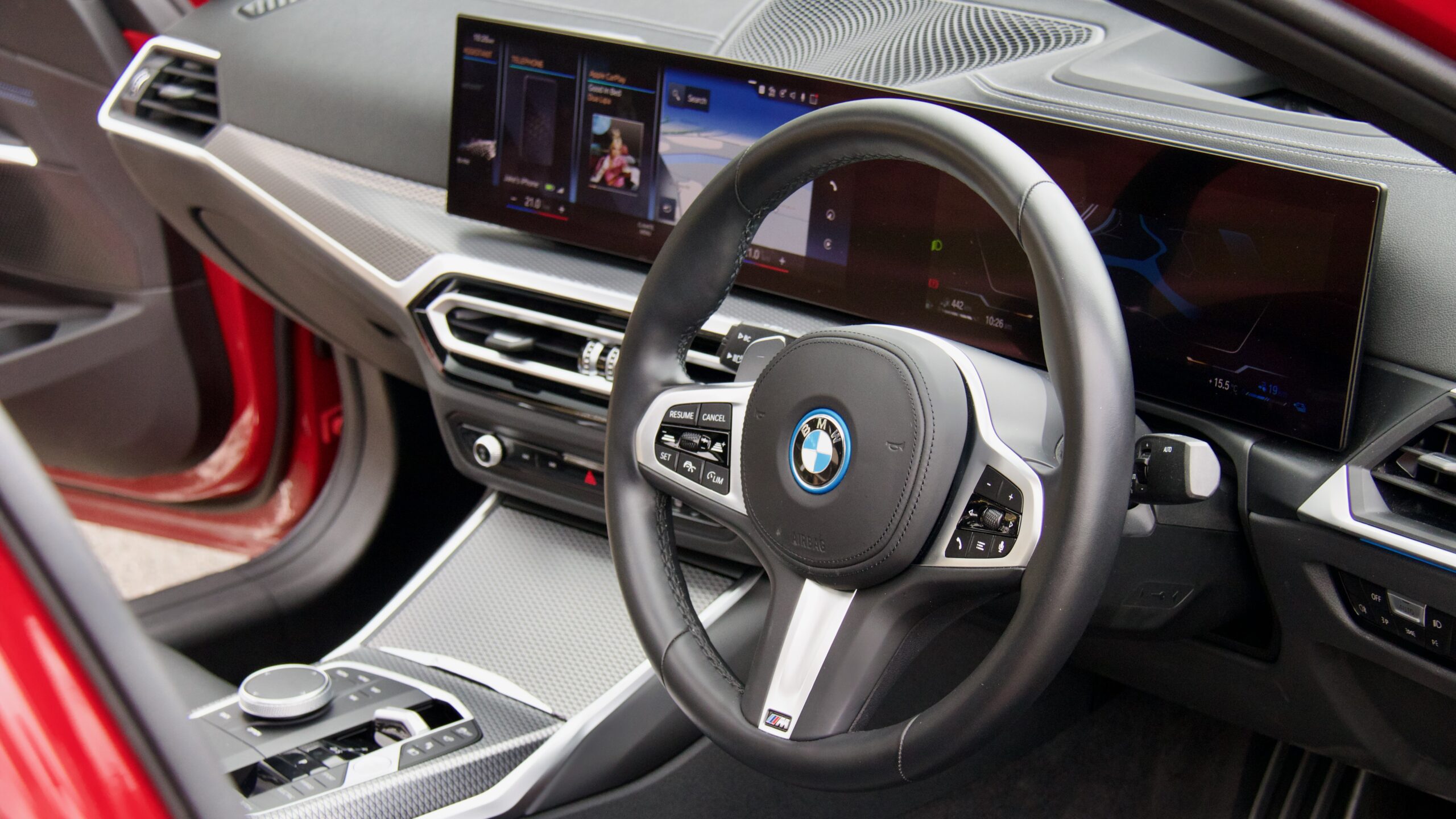
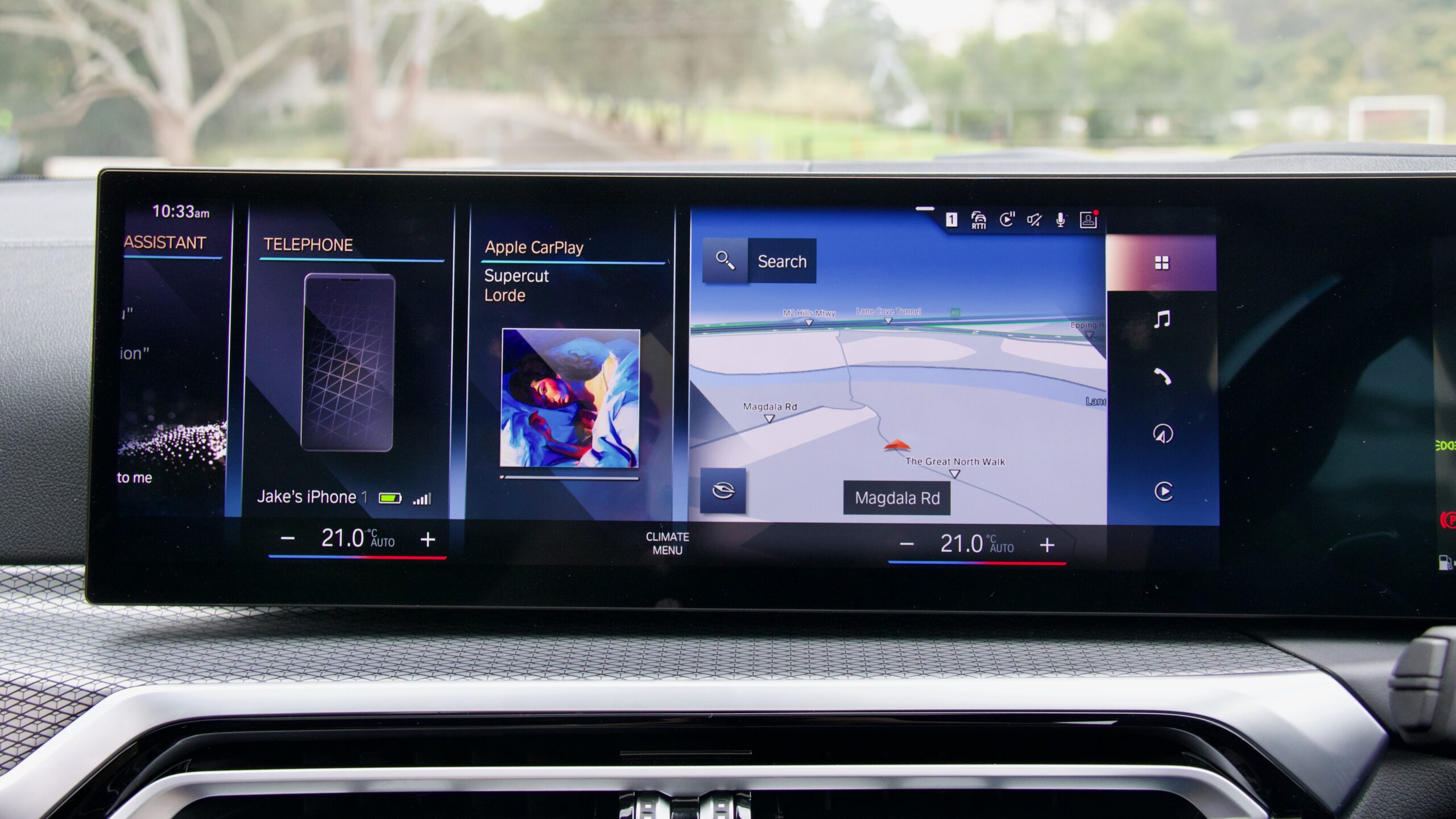
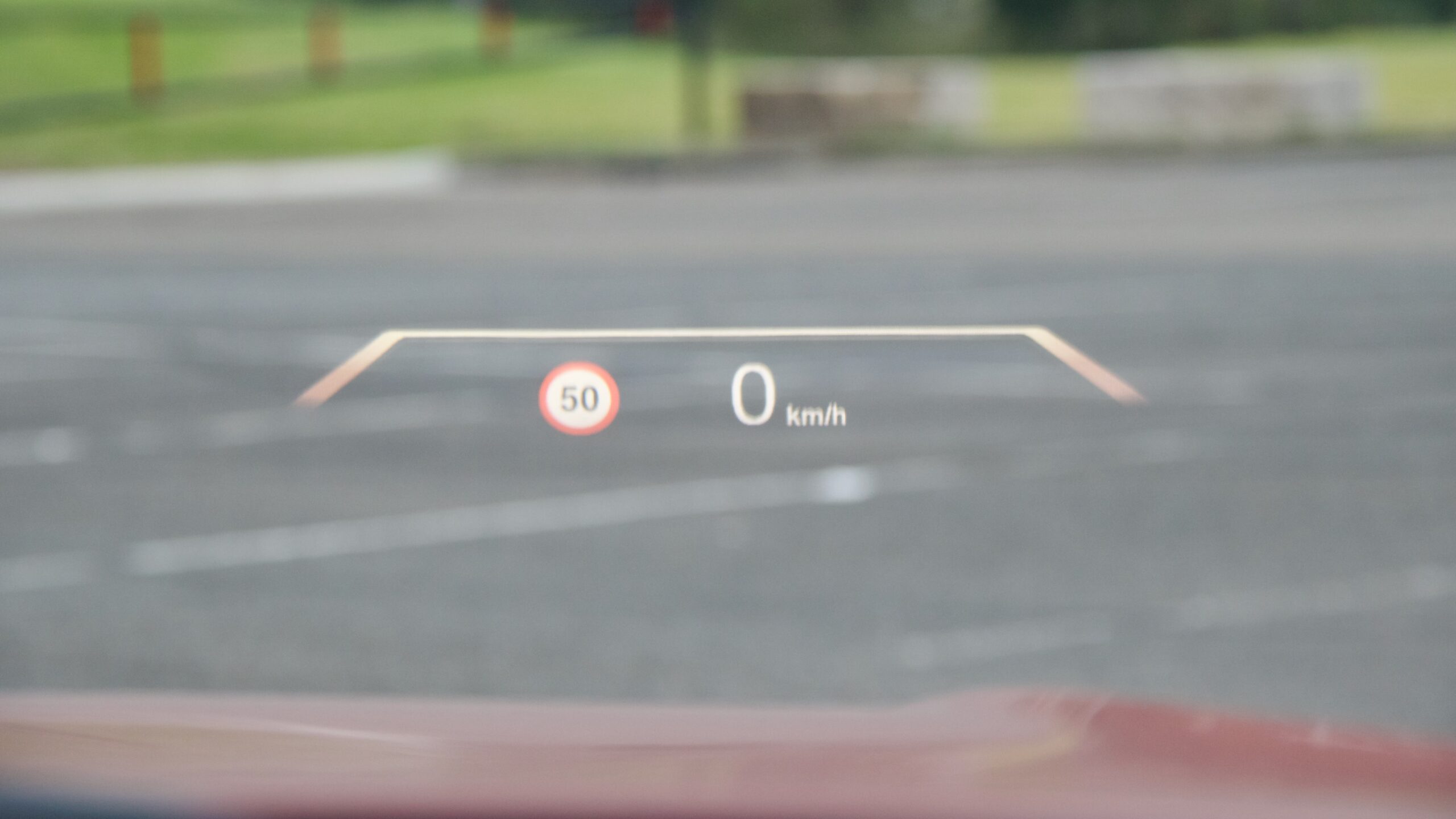
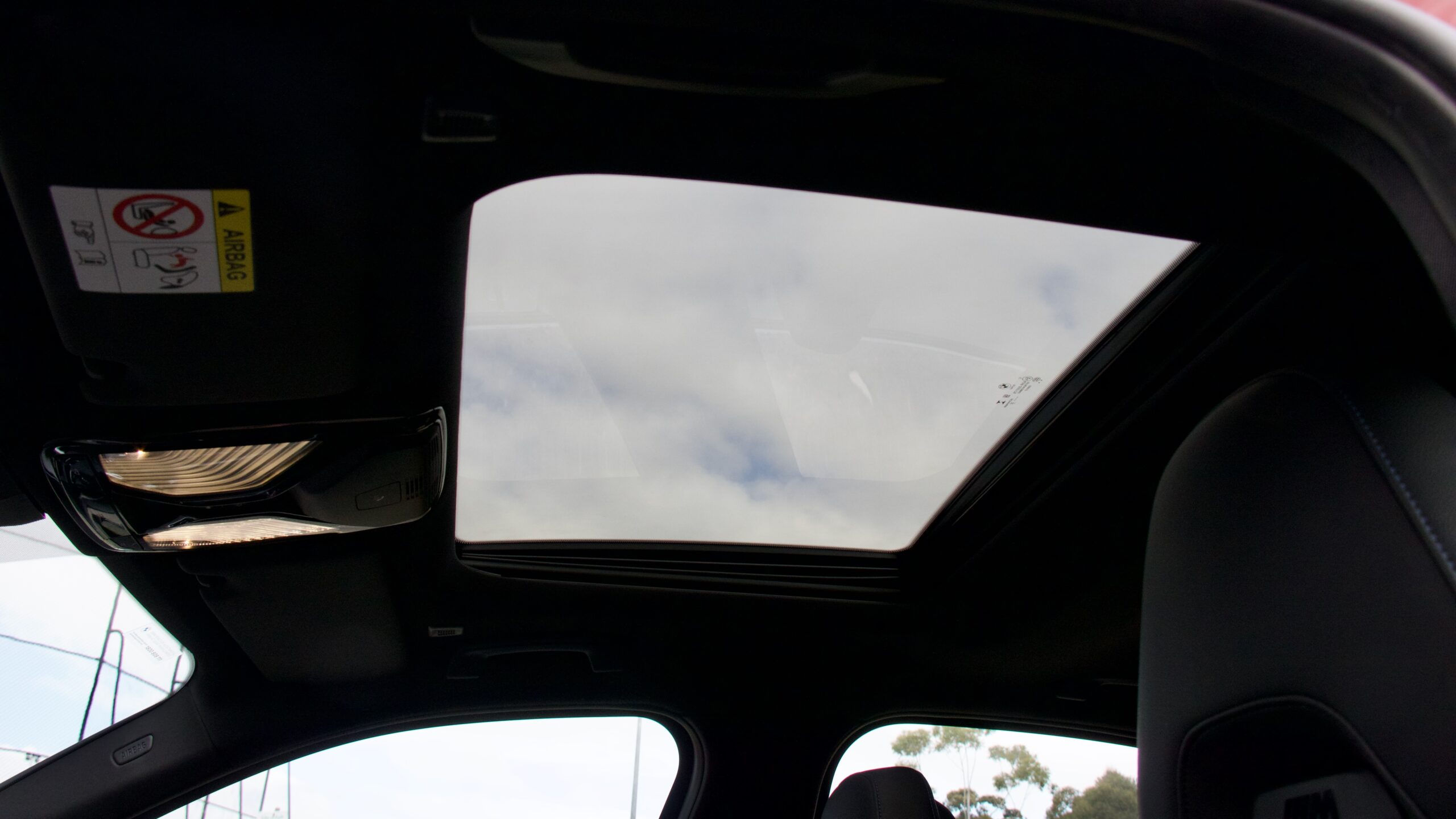
2023 BMW 330e standard equipment:
- 19-inch M Sport wheels with adaptive M suspension
- M Sport exterior styling
- Dusk- and rain-sensing automatic LED exterior lighting
- Front and rear LED daytime running lights
- Rain-sensing automatic wipers
- Keyless entry and push button start
- BMW Digital Key
- Electric bootlid
- M Sport 12-way electric front seats
- ‘Vernasca’ leather upholstery
- Head-up display
- Tri-zone climate control with rear air-vents
- 12.3-inch digital driver’s display
- 14.9-inch touchscreen
- Connected Package Professional with live services like traffic and weather
- 10-speaker sound system
- Wireless Apple CarPlay and Android Auto
- Wireless phone charger
- AM/FM/DAB digital radio
- Four USB ports (2x front, 2x rear)
- Type 2 and type 3 charging cables
The 3 Series range achieved a five-star ANCAP safety rating in 2019 with ratings of 97 per cent for adult occupant protection, 87 per cent for child occupant protection, 87 per cent vulnerable road user protection and 77 per cent for safety assist. Safety equipment includes:
- Six airbags
- Auto emergency braking (AEB) with pedestrian detection
- Lane keep assist with lane departure warning
- Lane trace assist
- Emergency steering assist
- Adaptive cruise control with stop and go functionality
- Blind-spot monitoring
- Front and rear cross-traffic alert
- Low-speed automatic rear braking
- Automatic parking
- Front and rear parking sensors
- 360-degree camera
- Auto high beam
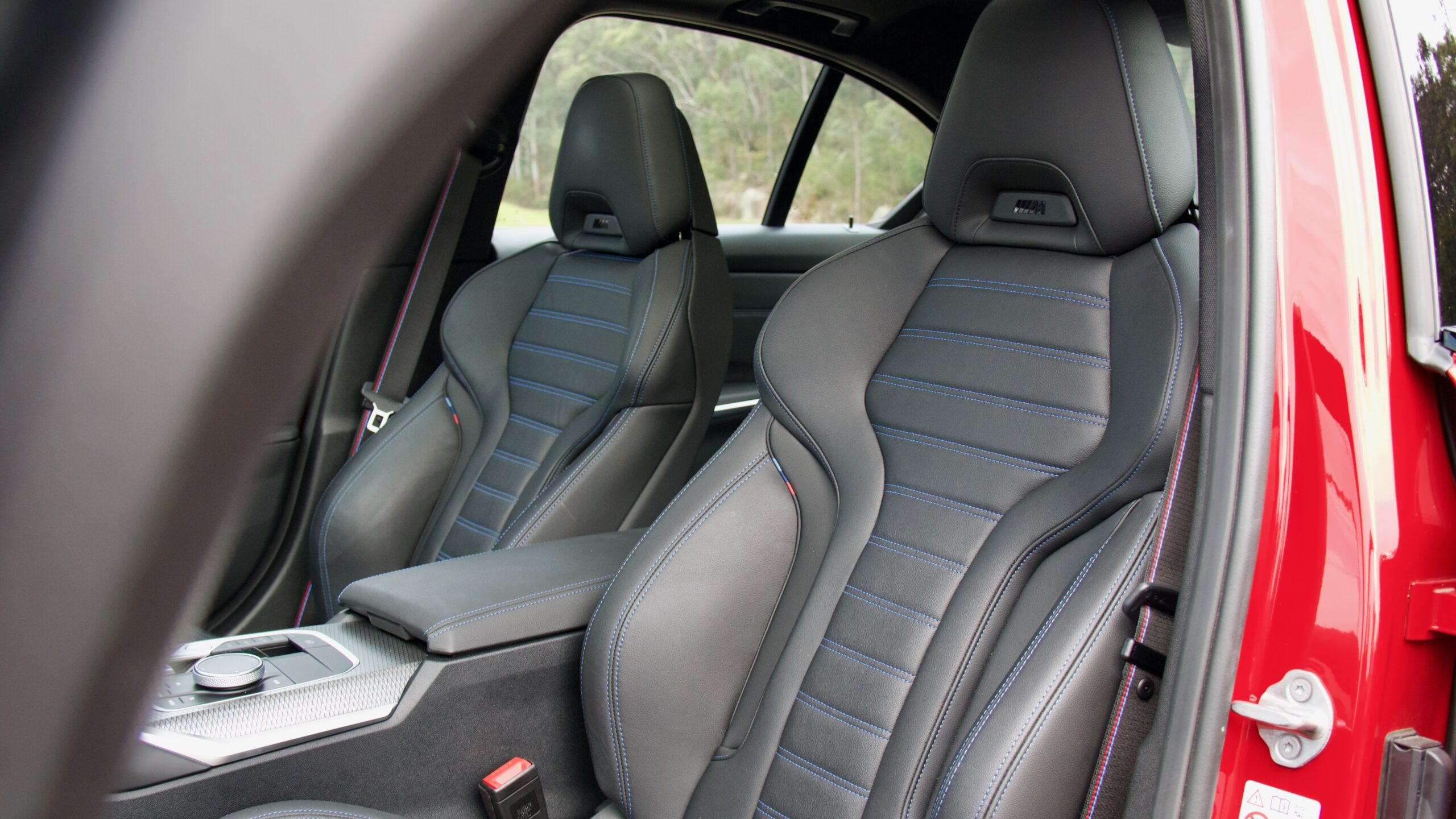
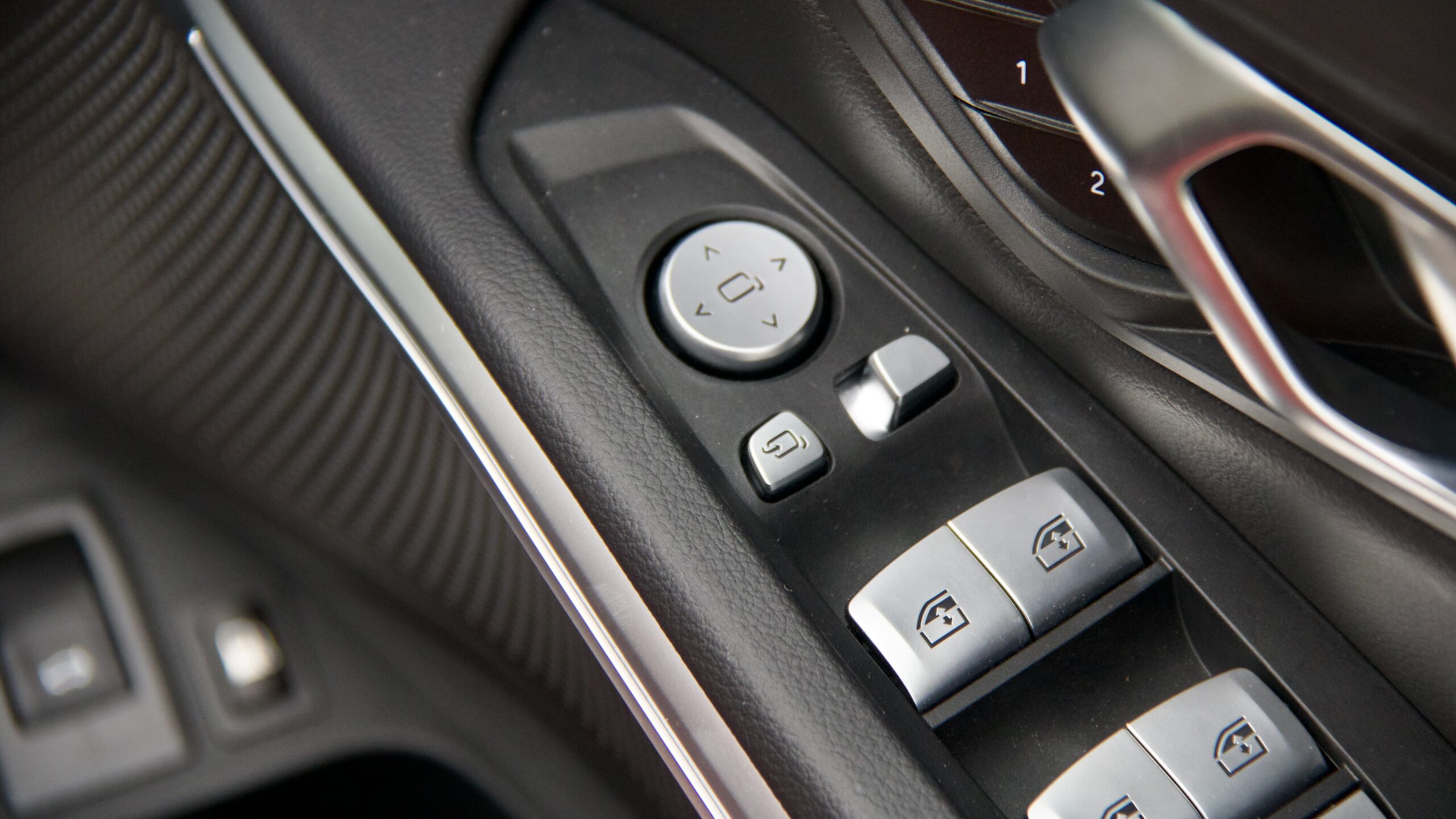
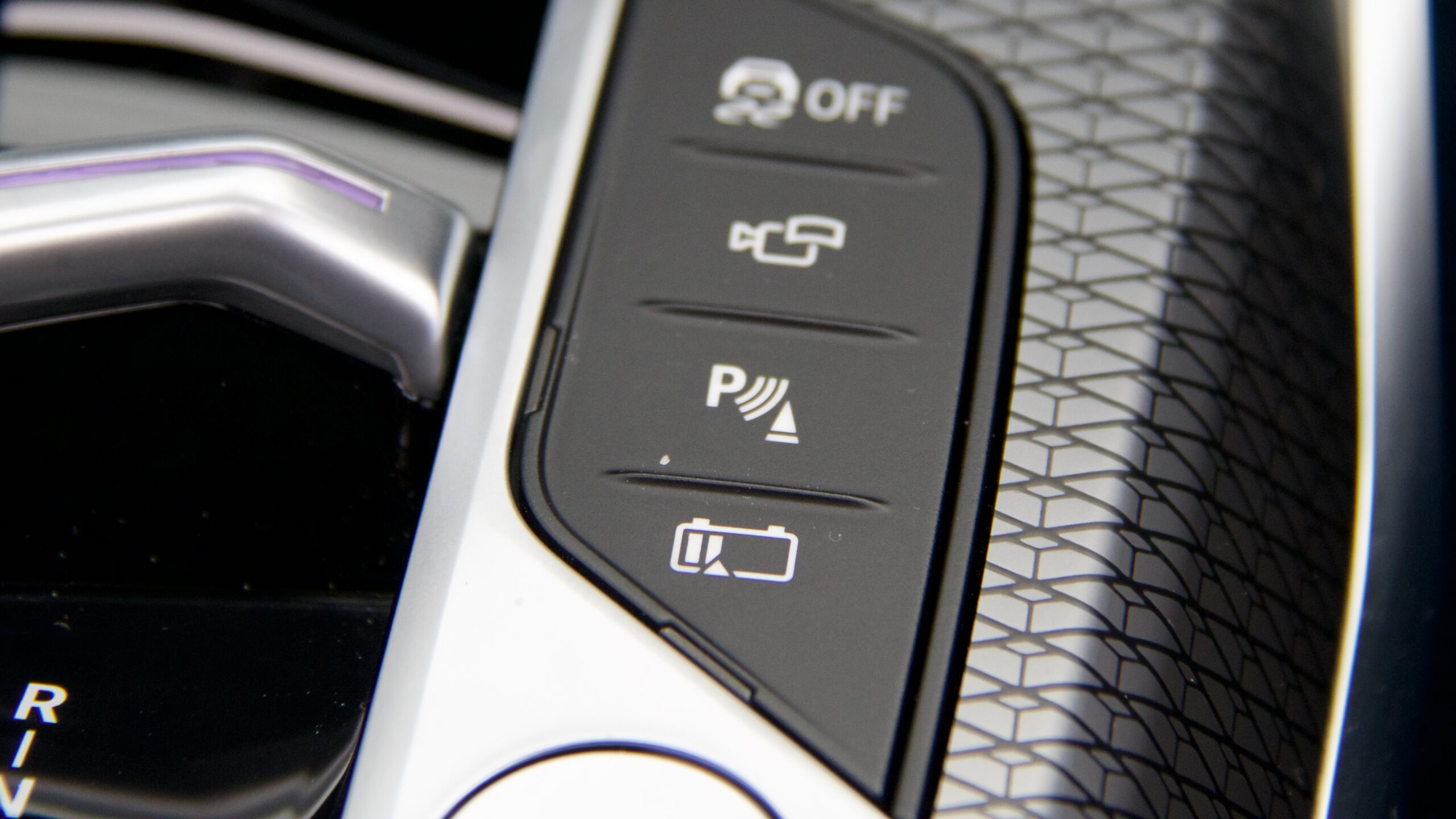
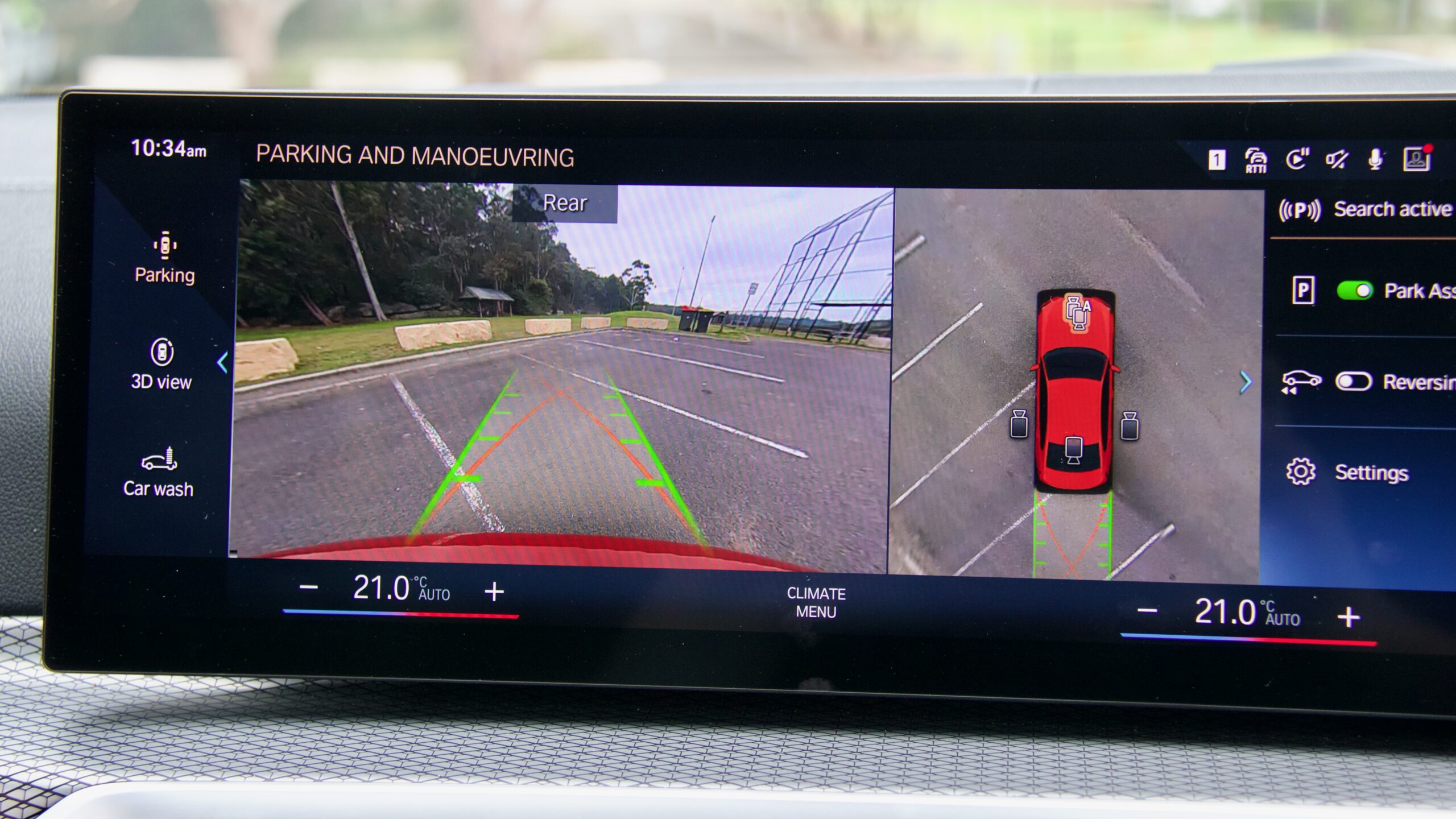
2023 BMW 330e options:
Visibility Package ($4,800):
- Sunroof
- Matrix LED headlights with adaptive high beam
M Sport Pro Package ($2,154):
- Boot lip spoiler
- Gloss black grille and tail pipes
- M Sport seat belts
Comfort Package ($2,385):
- Heated front seats
- Heated steering wheel
- 464W 16-speaker Harman Kardon sound system
Executive Package ($769):
- Acoustic glazing
- BMW drive recorder
- Tyre pressure monitoring
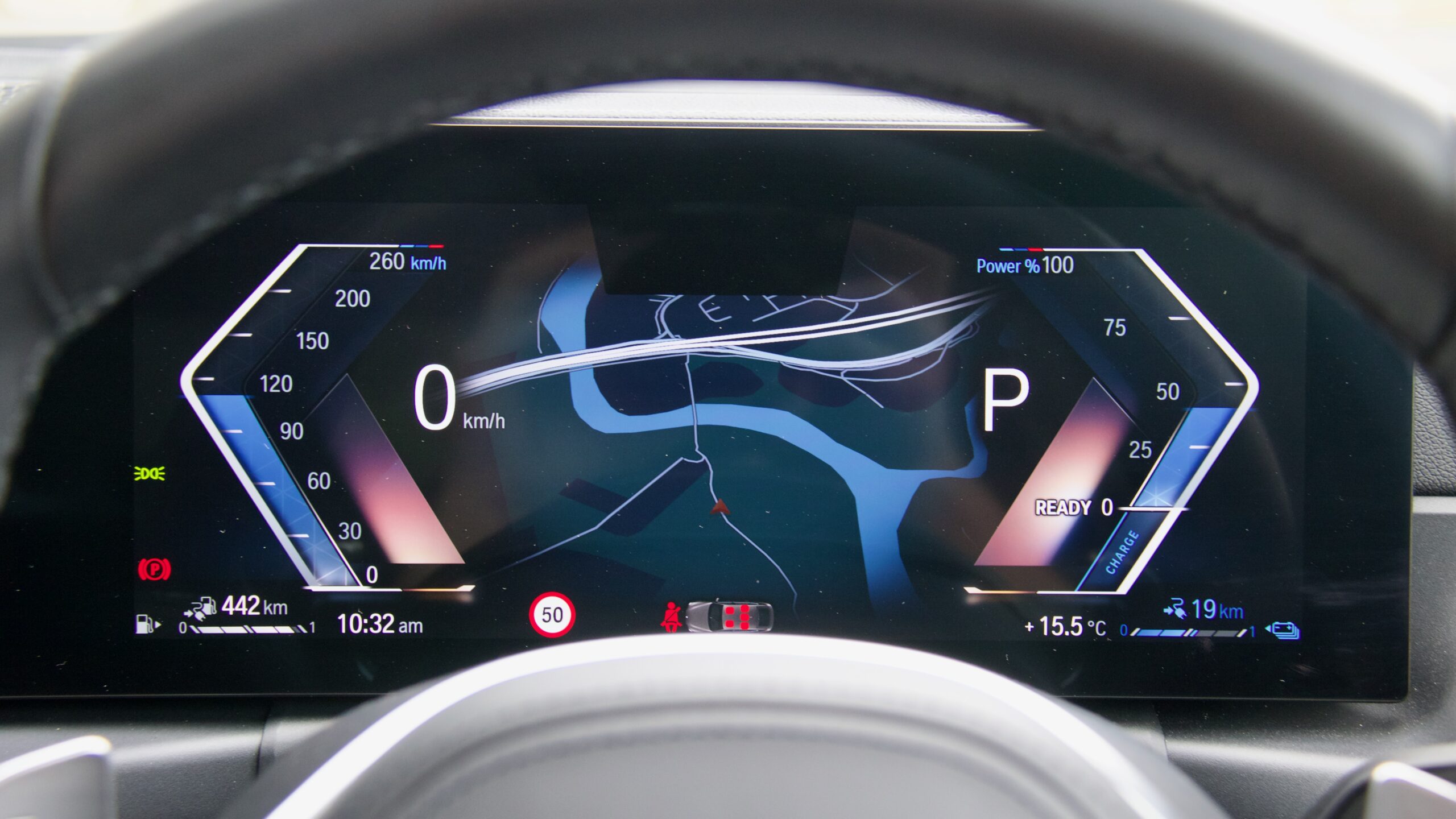
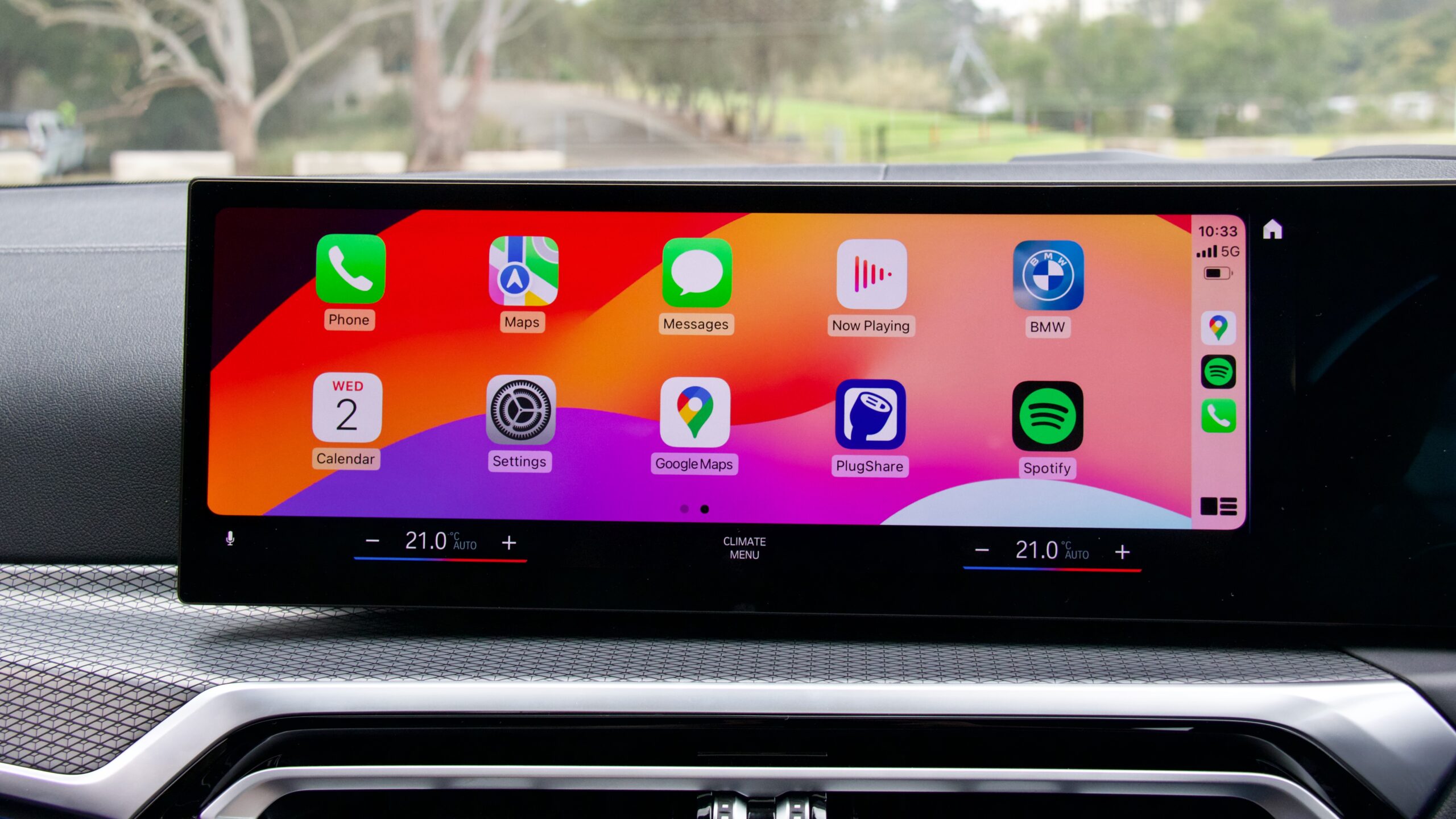
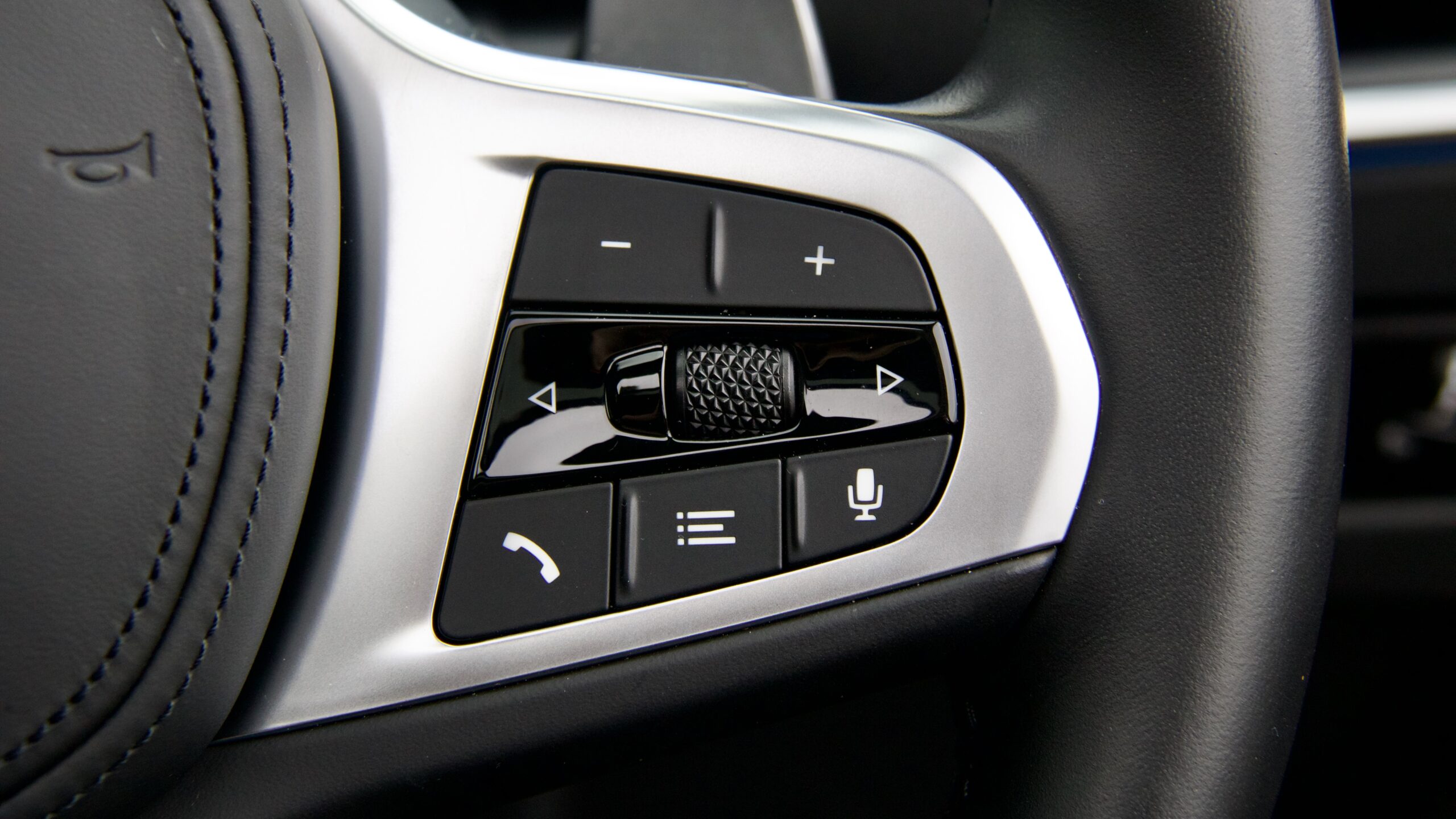
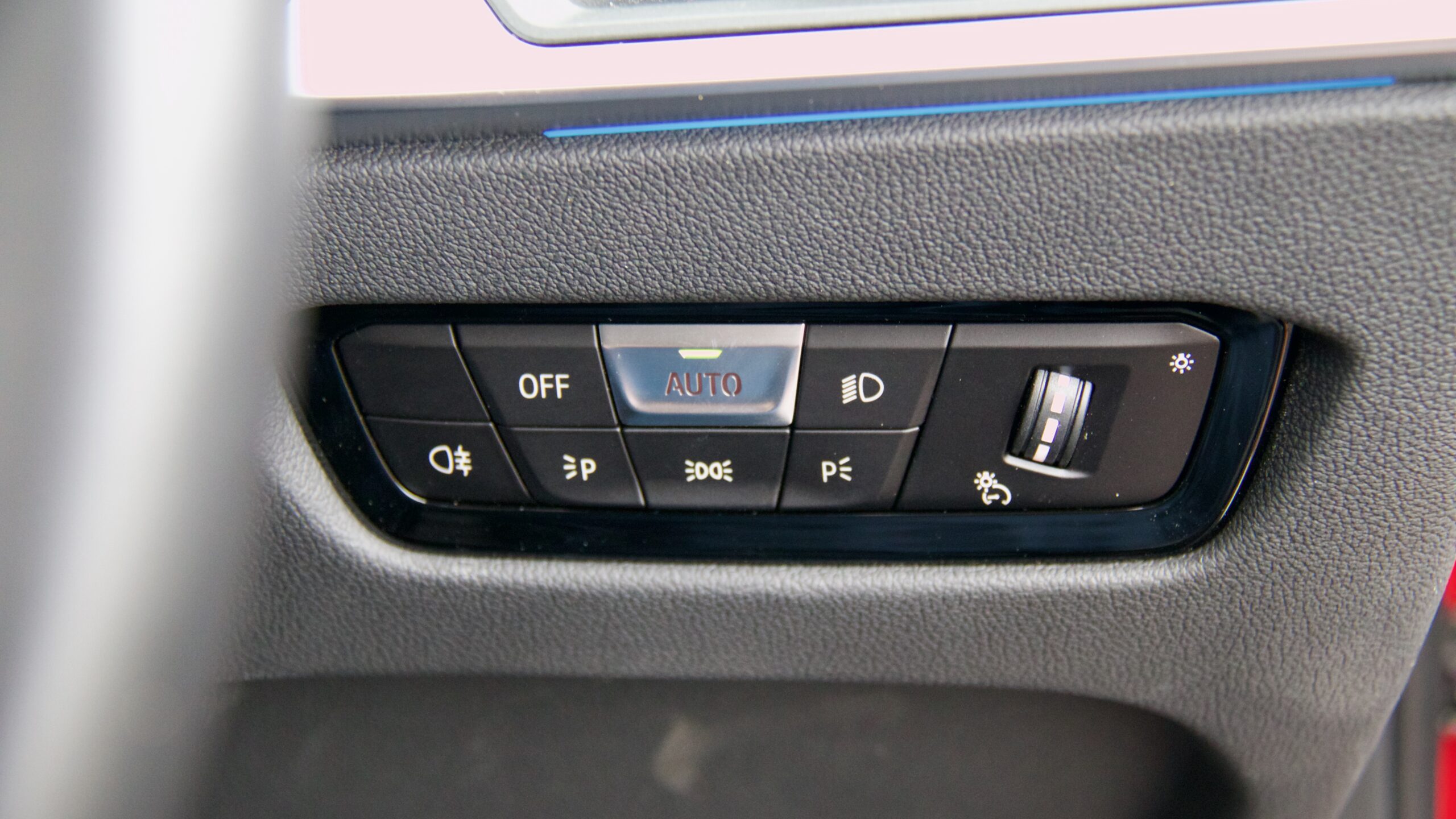
Colours:
- Alpine White
- Mineral White ($1,530)
- Melbourne Red (on our test car – $1,530)
- M Brooklyn Grey ($1,530)
- Skyscraper Grey ($1,530)
- Black Sapphire ($1,530)
- M Portimao Blue ($1,530)
- Tanzanite Blue ($2,961)
- Dravit Grey ($2,961)
Interior trim options include either black or tan leather.
The 2023 BMW 330e does not have a direct rival as plug-in hybrids in this segment no longer exist – there once was the Mercedes-Benz C350e, but it has turned to mild-hybrid petrol power for the new C-Class range. If buyers want a PHEV of a similar size, they must turn to the Peugeot 508 GT PHEV (around $80,000 drive away), which isn’t cheap, but is a lot less expensive than the BMW. Otherwise, the regular hybrid Lexus ES300h starts from around $70,000 drive away, again a lot less than the BMW, and that’s not even getting into more detail about the extra standard equipment or size of the Lexus.
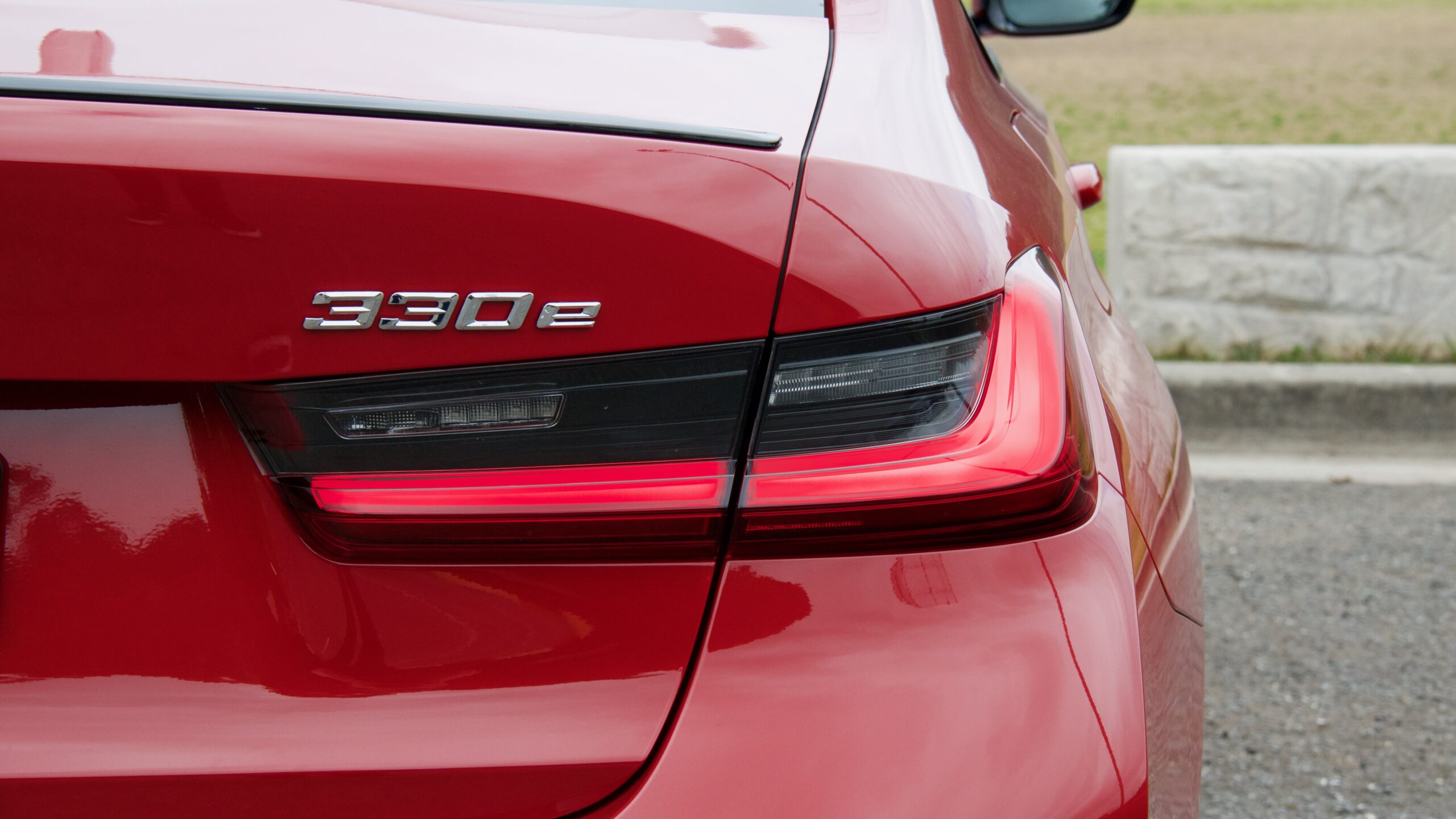
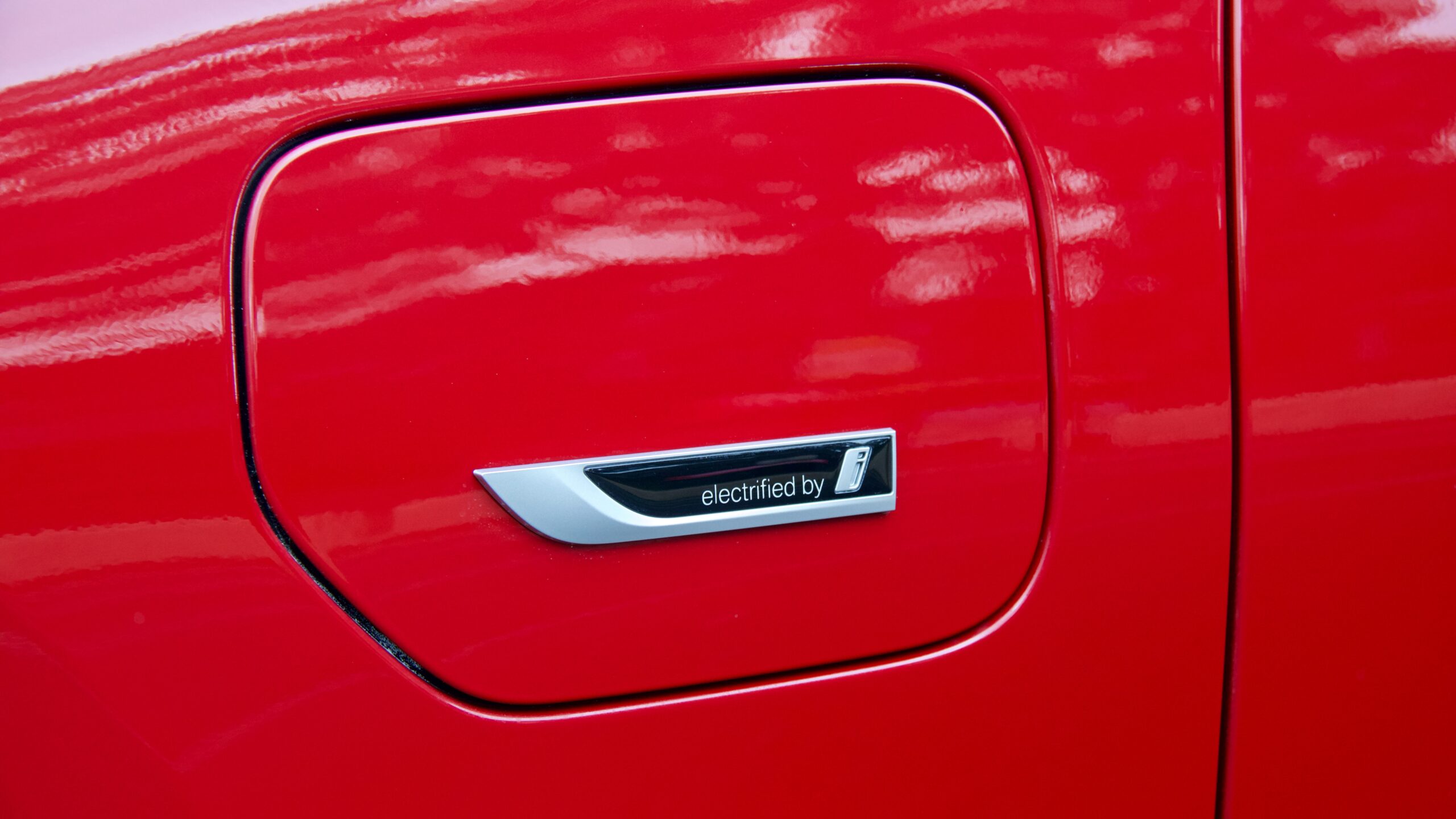
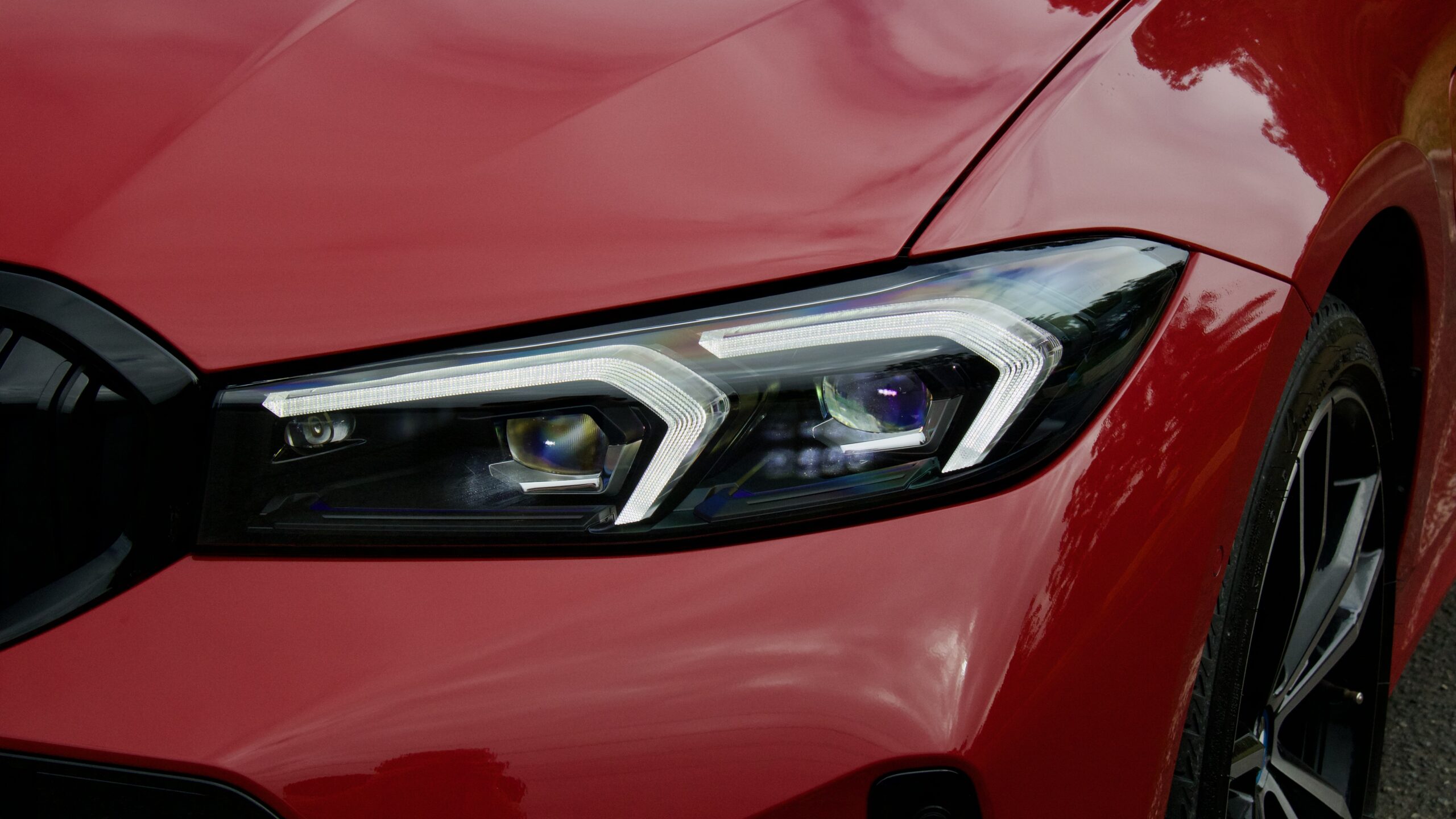
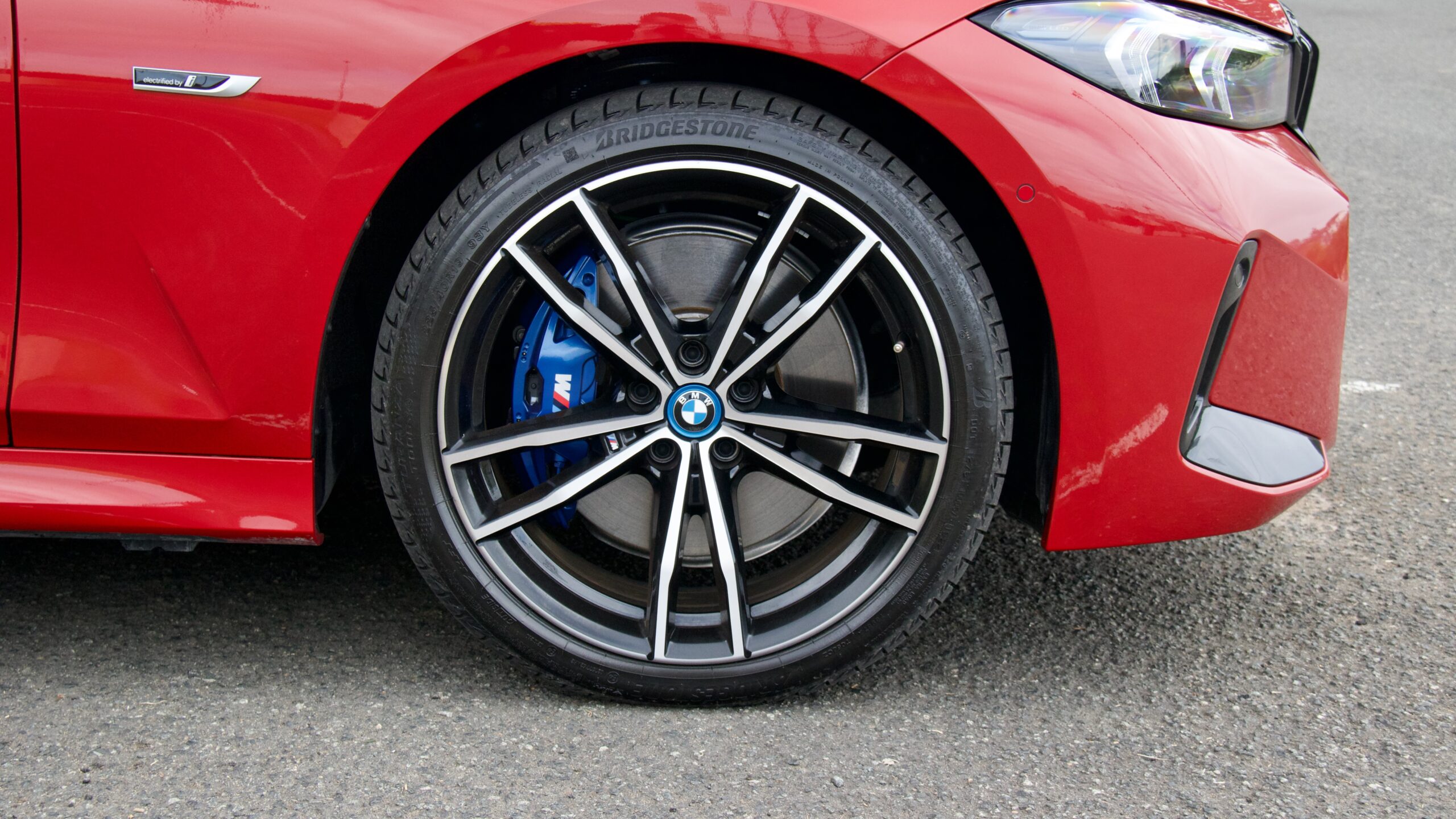
For us, however, the biggest hole in the BMW’s value armour is that there are many all-electric alternatives to the 330e and one of which, the new i4 eDrive35 (priced from around $93,000 drive away), comes from within the BMW family. Plus, there are also cars like the Hyundai Ioniq 6, Polestar 2 and Tesla Model 3 to consider as well if buyers are looking to go with electrification for their next premium mid-size sedan – and that’s not even considering all the SUV alternatives.
Performance & Economy: 8/10
Like the other non-M340i models in the 3 Series range, the 2023 BMW 330e uses a turbocharged 2.0-litre four-cylinder petrol engine that’s mated to an eight-speed torque converter automatic transmission that sends its power to the rear wheels. In the 330e, that is joined by an 83kW electric motor that draws power from a 12kWh battery located under the boot floor. Combined, the 330e’s drivetrain makes 215kW of power and 420Nm of torque – 25kW and 20Nm more than the 330i – and the claimed 0-100km/h sprint time is just 5.8 seconds, which is identical to the 330i.
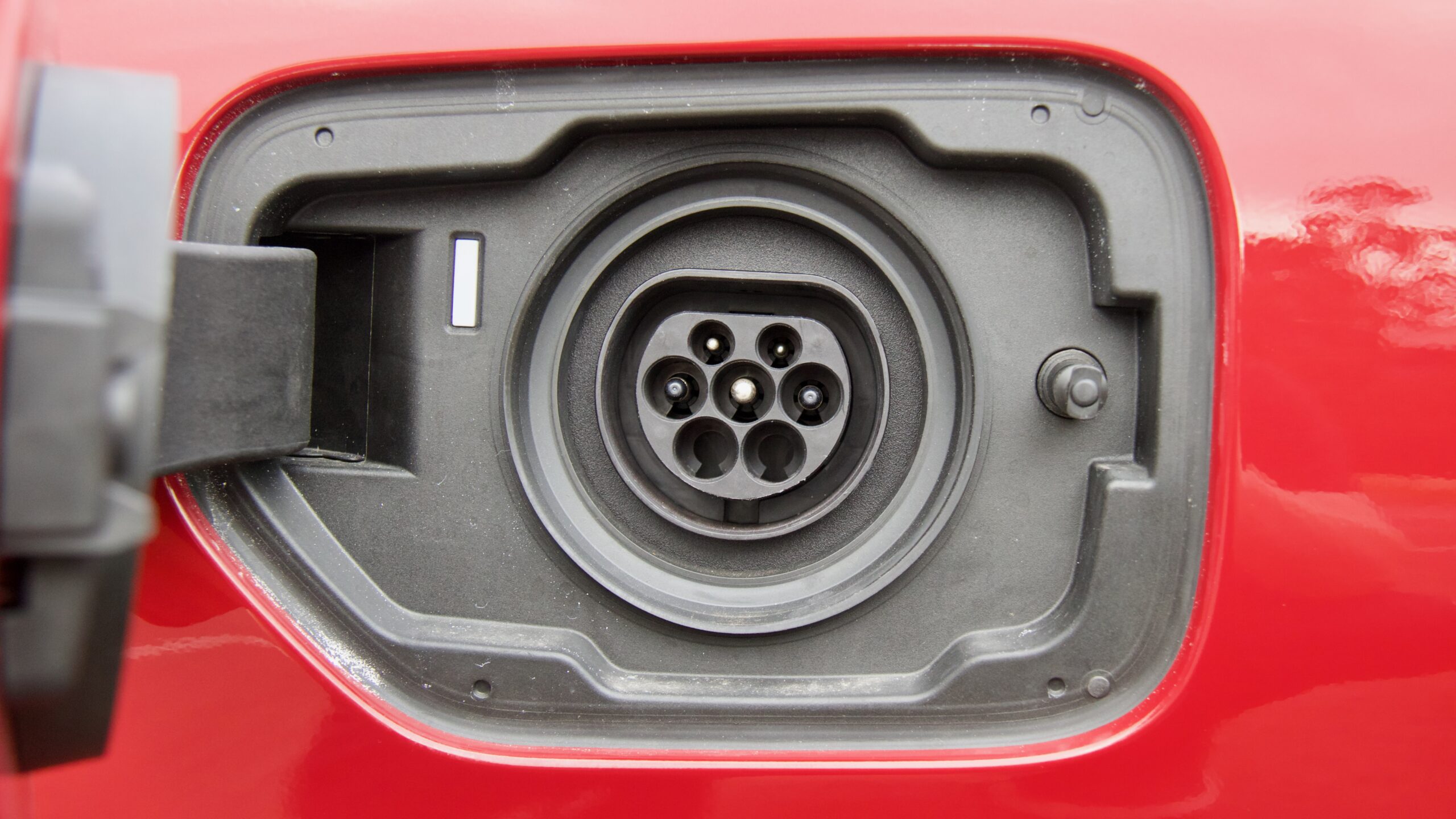
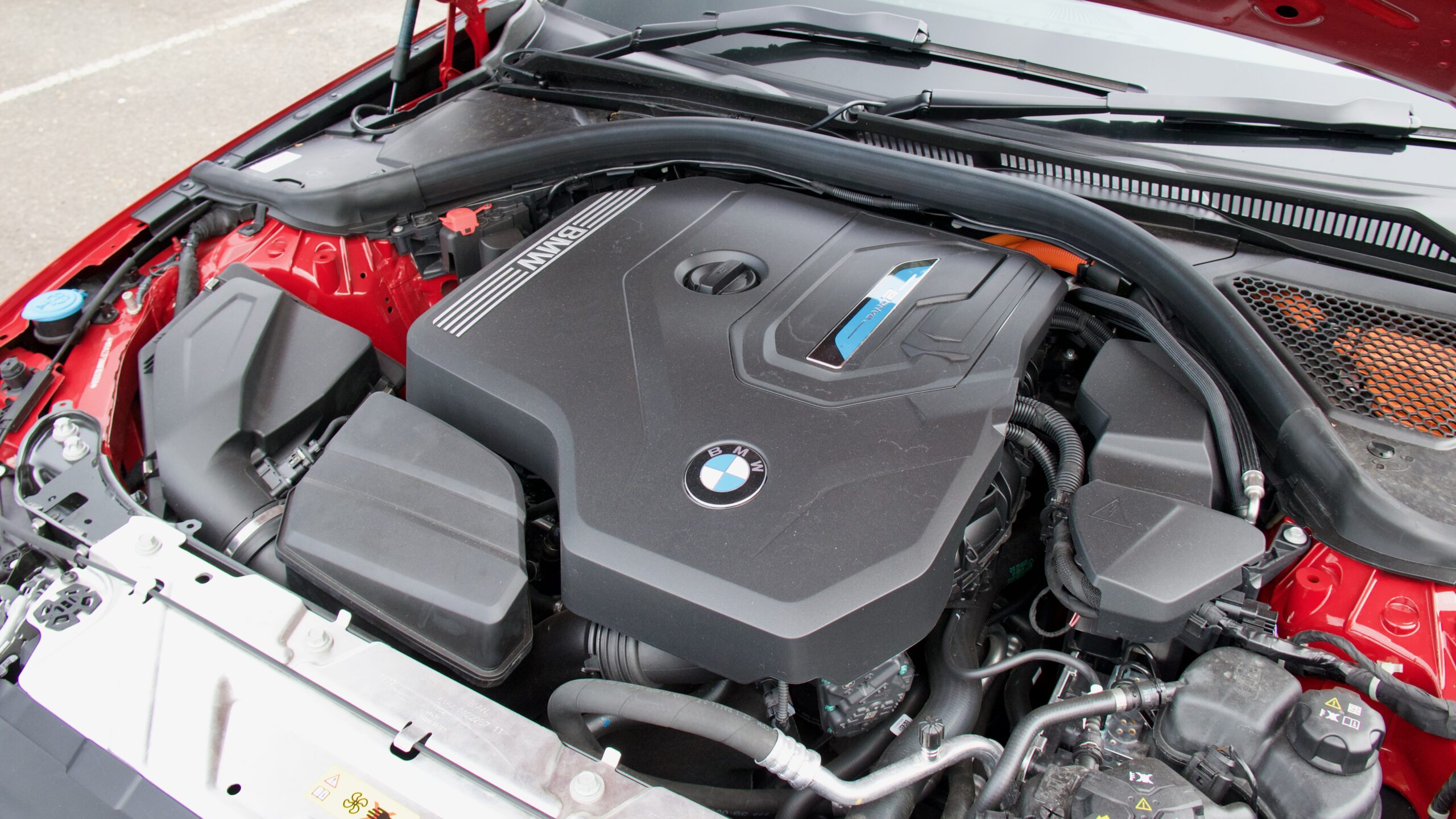
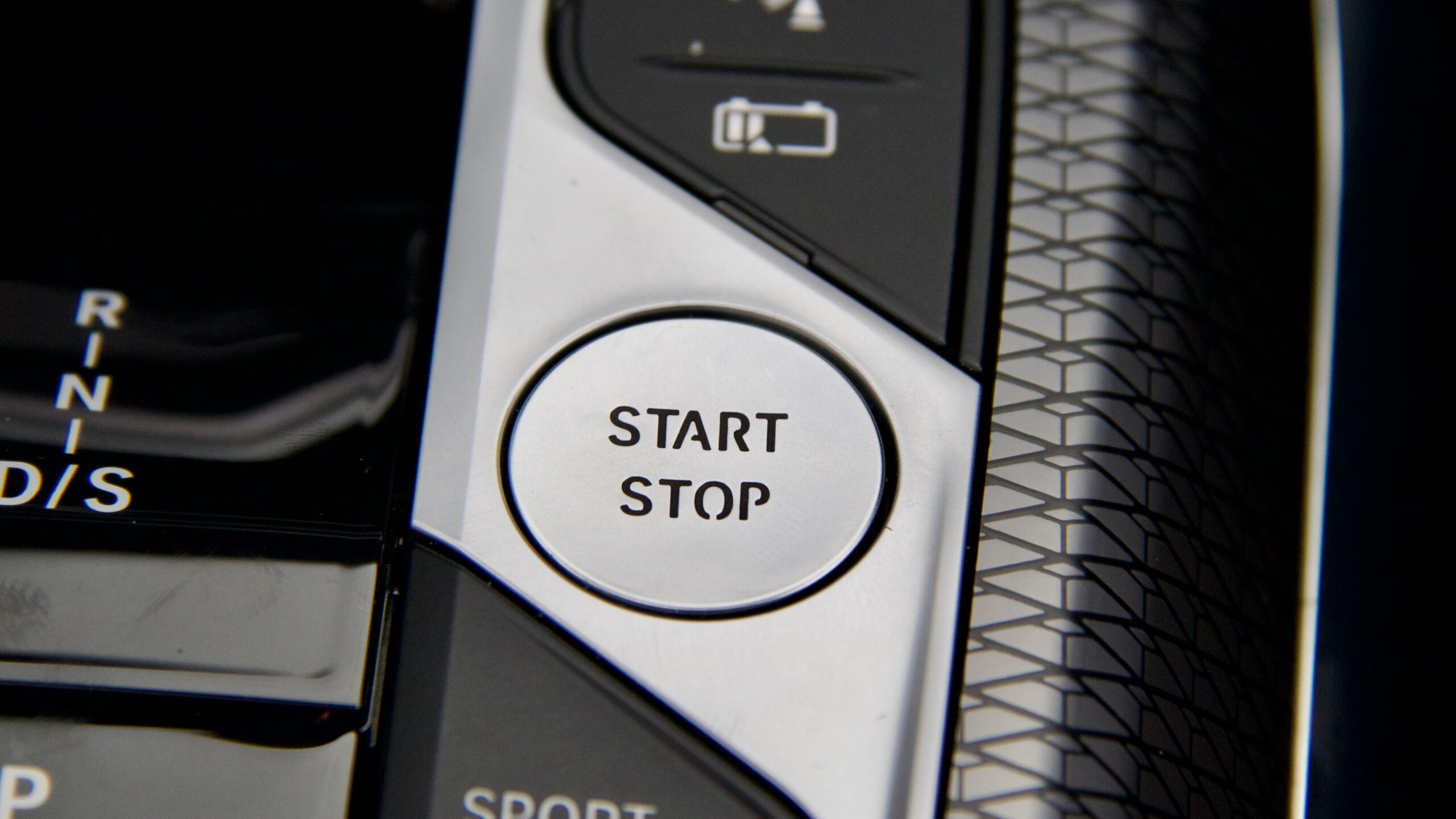
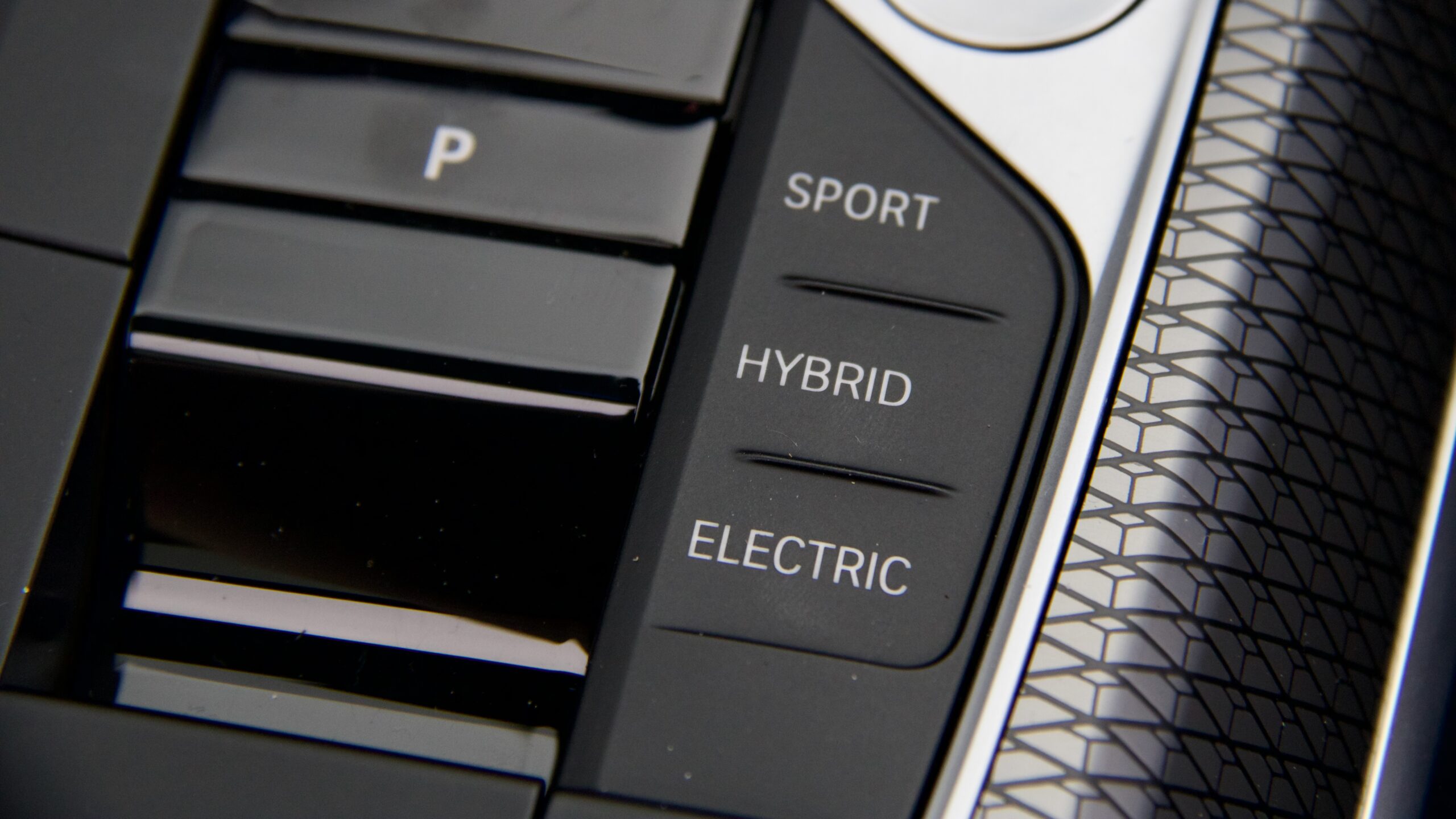
The drivetrain in the 330e is pretty good, in our opinion. It’s refined, quite smooth – the transition between electric and petrol power is almost unnoticeable – and is generally quite seamless, which is exactly what you want from a luxury car. The transmission is – like its application in other 3 Series models – also completely intuitive, yet also a quiet worker, even in all-electric mode. We also like how nice it sounds with its sporty exhaust note, while in sport mode, it feels properly quick as well. There are multiple driving modes as well – hybrid seamlessly switches between electric and petrol power, while electric mode is for pure EV driving, if the battery level allows for it.
Unfortunately, the 2023 BMW 330e doesn’t have DC fast charging capability, so AC charging is its only option and it can be charged at a maximum of just 3.7kW or 16 amps. That means that a full charge takes just under four hours, which makes it a good option for those wanting to charge it overnight through a regular wall socket – though those wanting greater range and charging speed will no doubt look to a proper EV. While DC fast charging for PHEVs is still annoyingly rare, cheaper options like the Mitsubishi Outlander PHEV do offer it and mean that 80km of range can be added quite quickly.
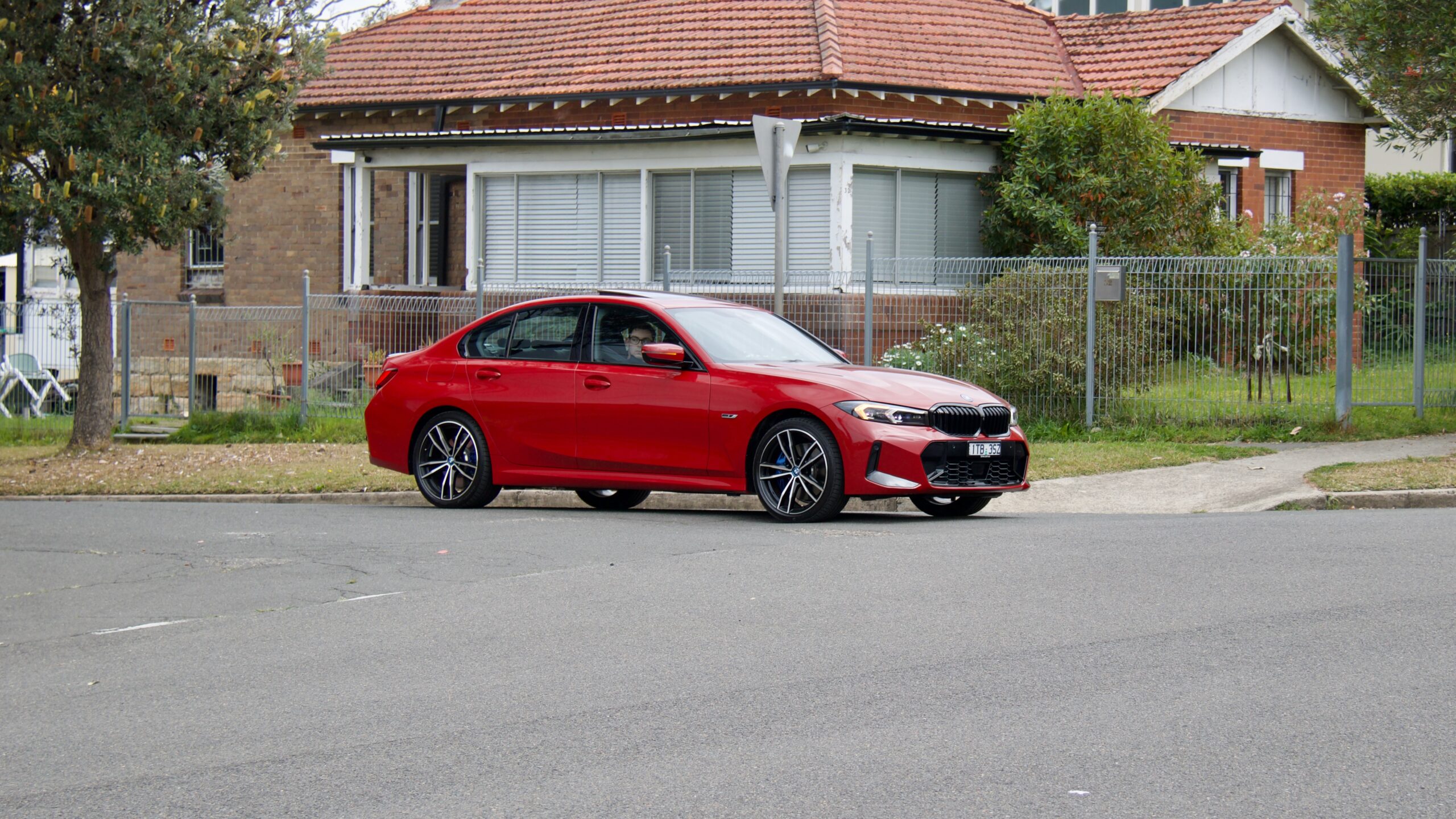
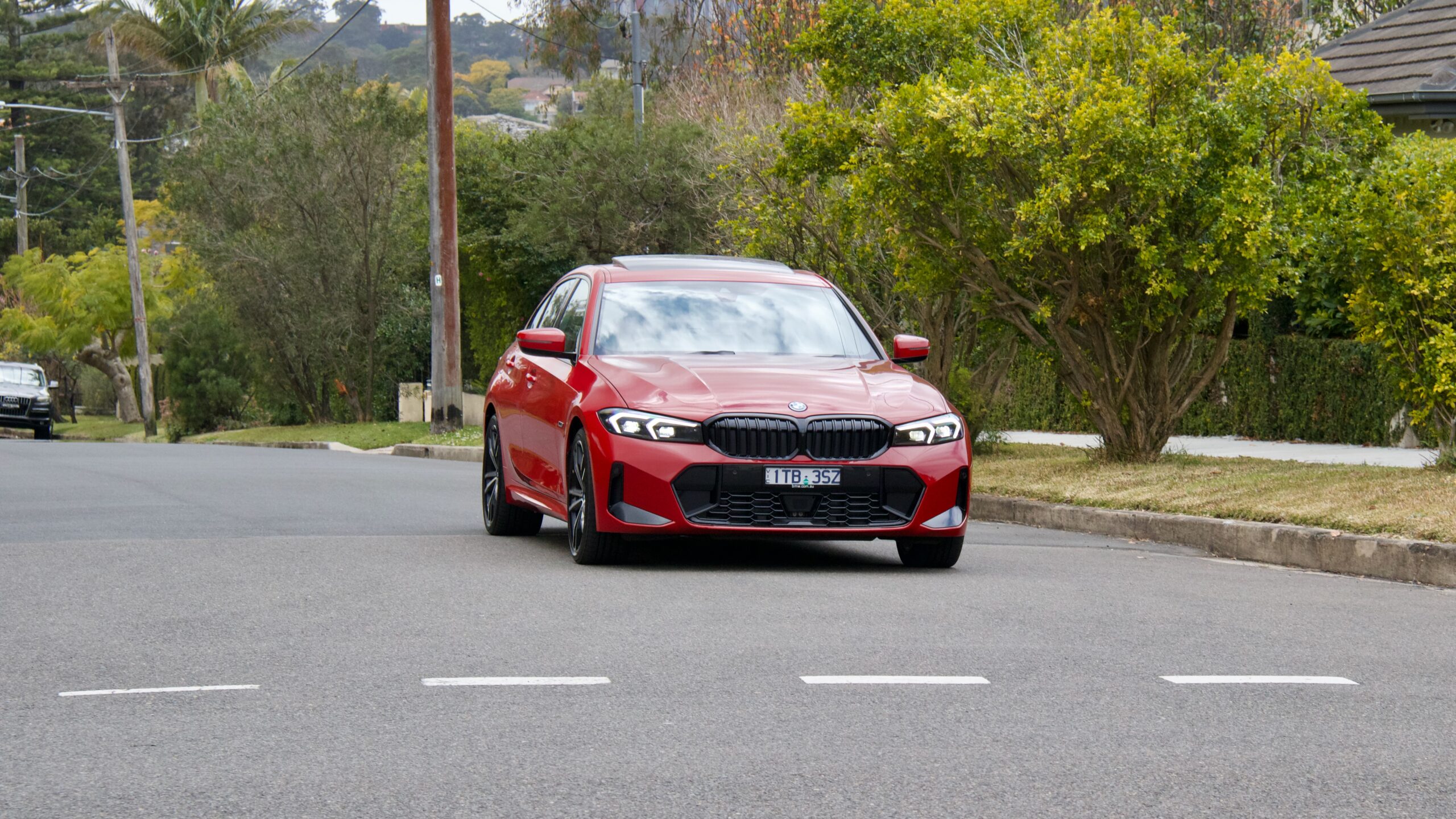
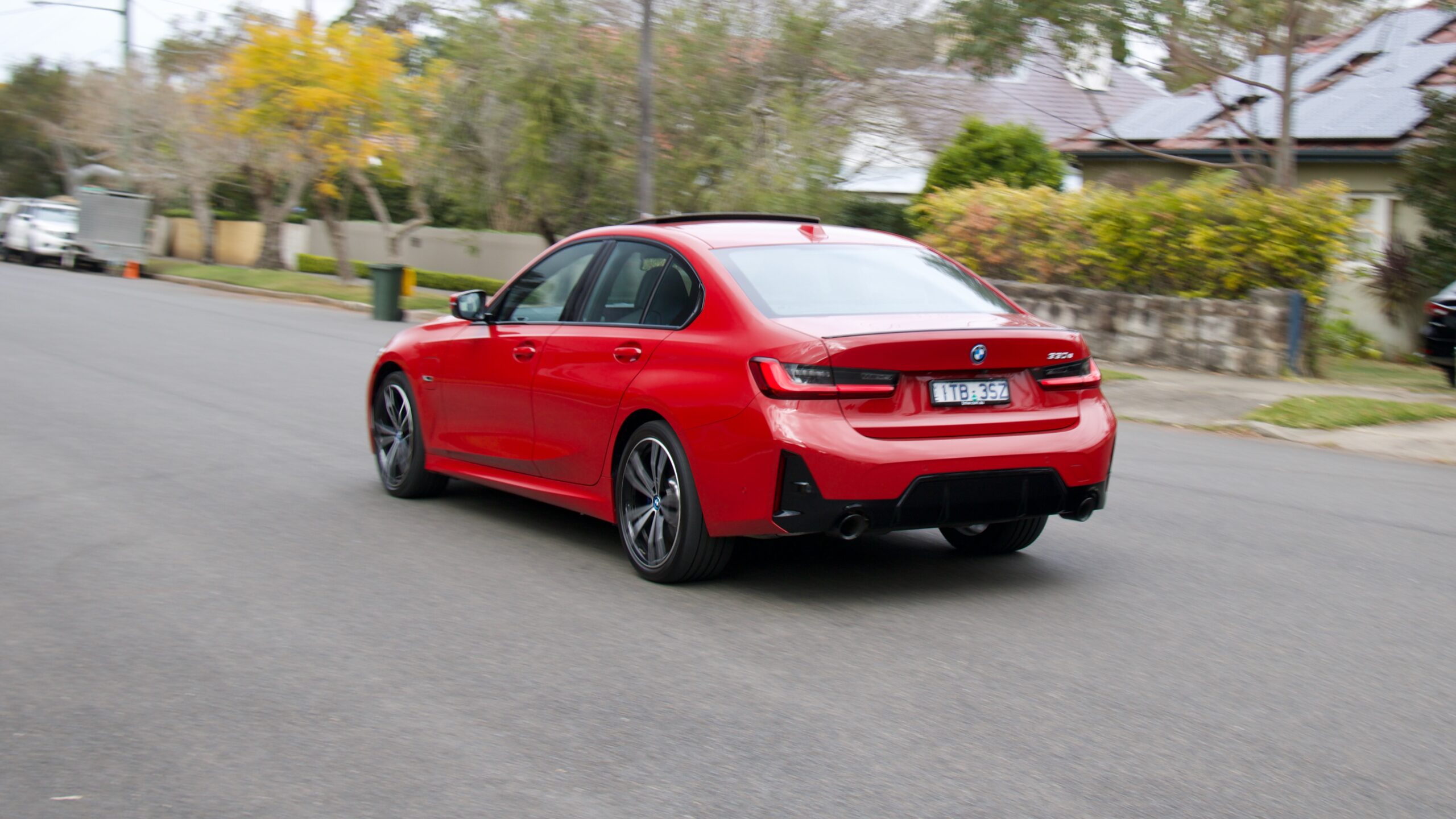
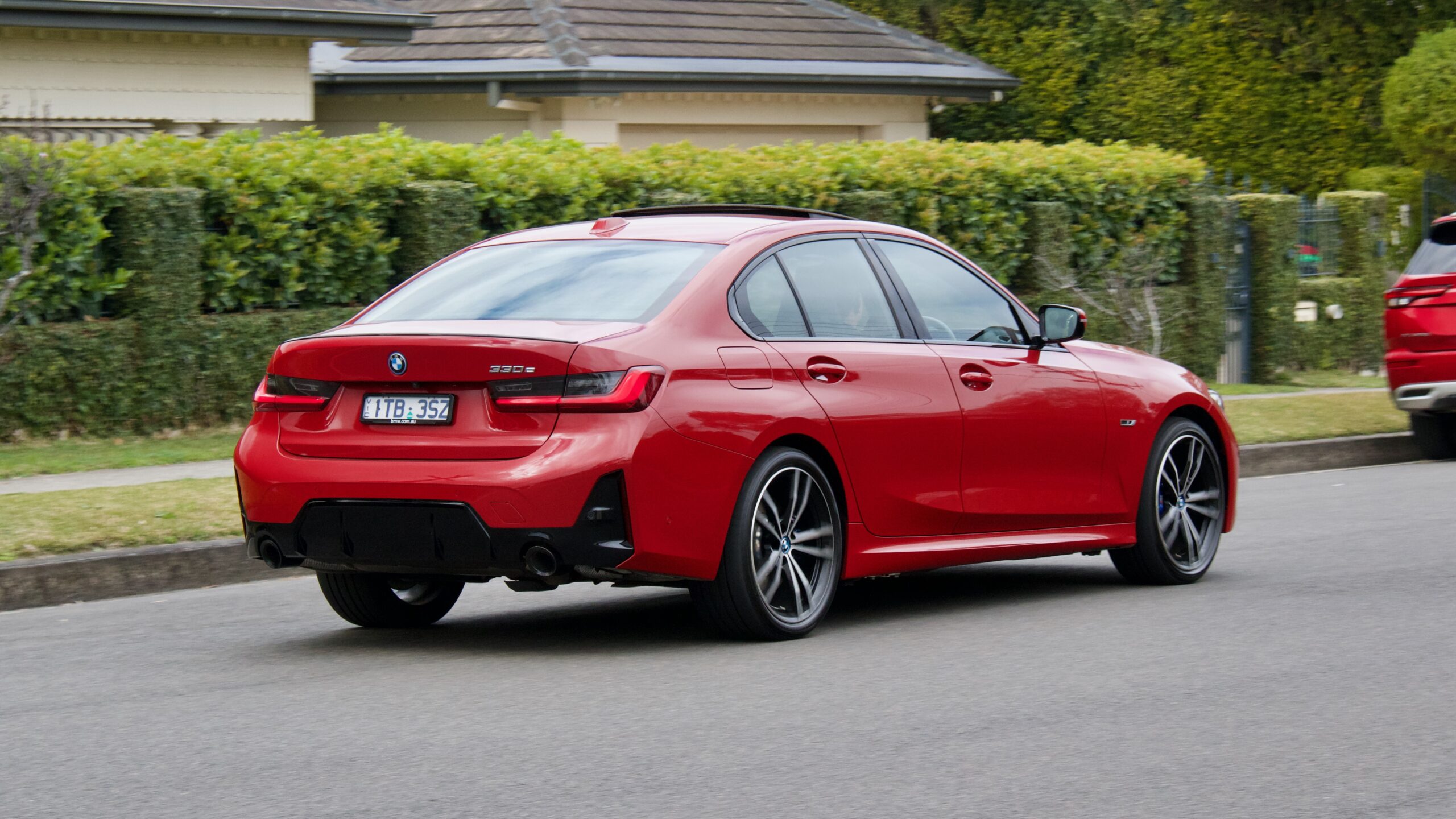
As for fuel consumption, the 2023 BMW 330e is rated at 2.5L/100km on the combined fuel consumption cycle with CO2 emissions rated at 57g/km and a claimed all-electric range of 57km. As with every other plug-in hybrid, however, those figures will depend on how much it’s charged. We got a maximum 43km of all-electric driving and combined fuel consumption of 5.6L/100km after a week with it – that included a few full charges, as well as running it in hybrid mode. Those wanting the 330e for touring will find its 40-litre fuel tank – 19L less than the 330i – limiting, and a 330i won’t be far off its consumption with a depleted battery. As with all other PHEVs, it only makes sense if you’re able to charge it.
Ride & Handling: 8.5/10
As you’d expect for a 3 Series, the 2023 BMW 330e handles quite well in the premium mid-size segment. It’s not quite Alfa Romeo Giulia sharp, but there’s far more involvement in the chassis than an Arteon, for example. As with the Giulia, the 3er’s driving position is nice and low, while the steering wheel is suitably thick for spirited driving. In normal driving, the ride quality is a touch firm thanks to the extra weight of the plug-in hybrid system – its 1,747kg tare mass is 259kg more than a 330i – but it’s still more than comfortable.
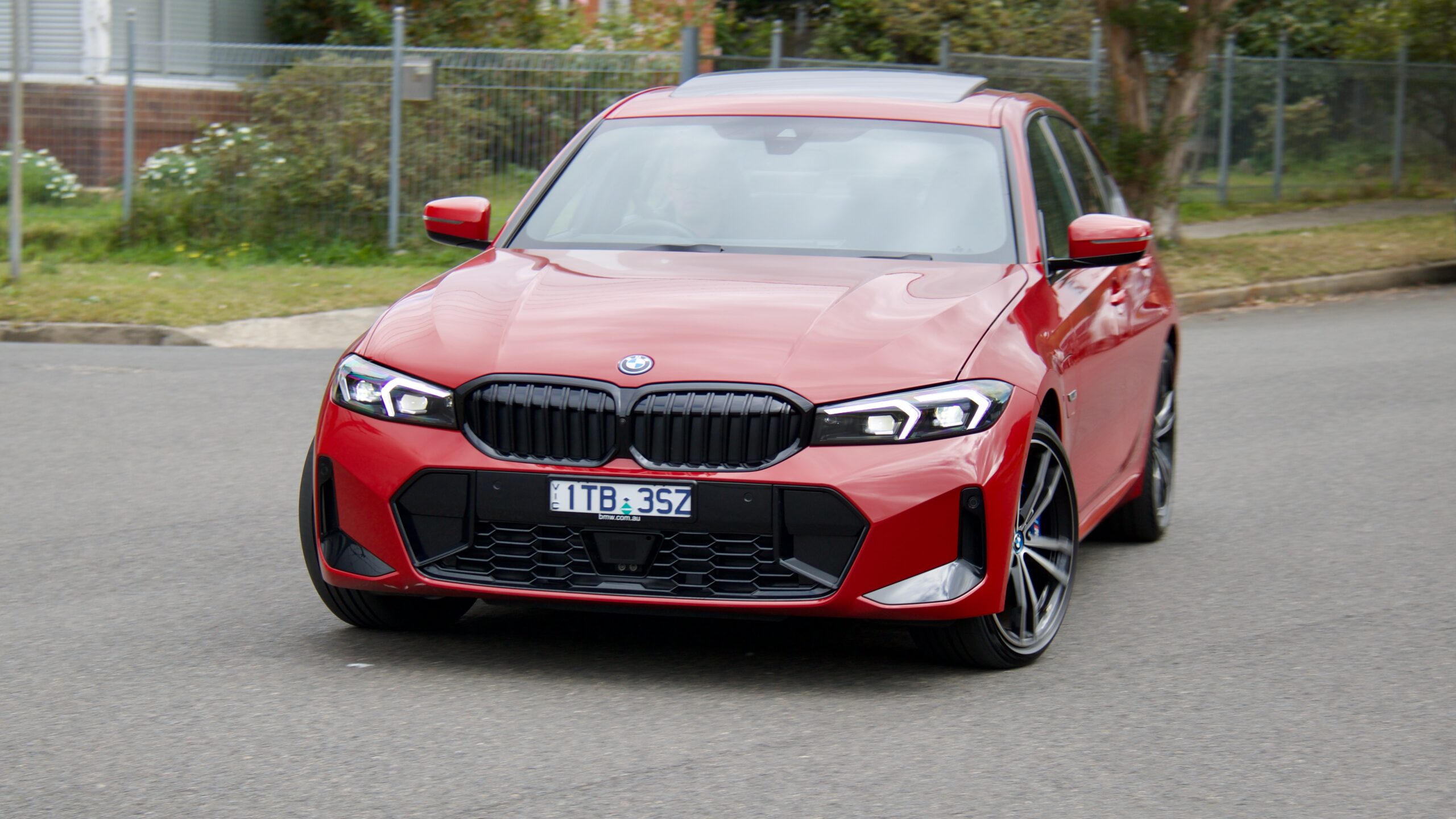
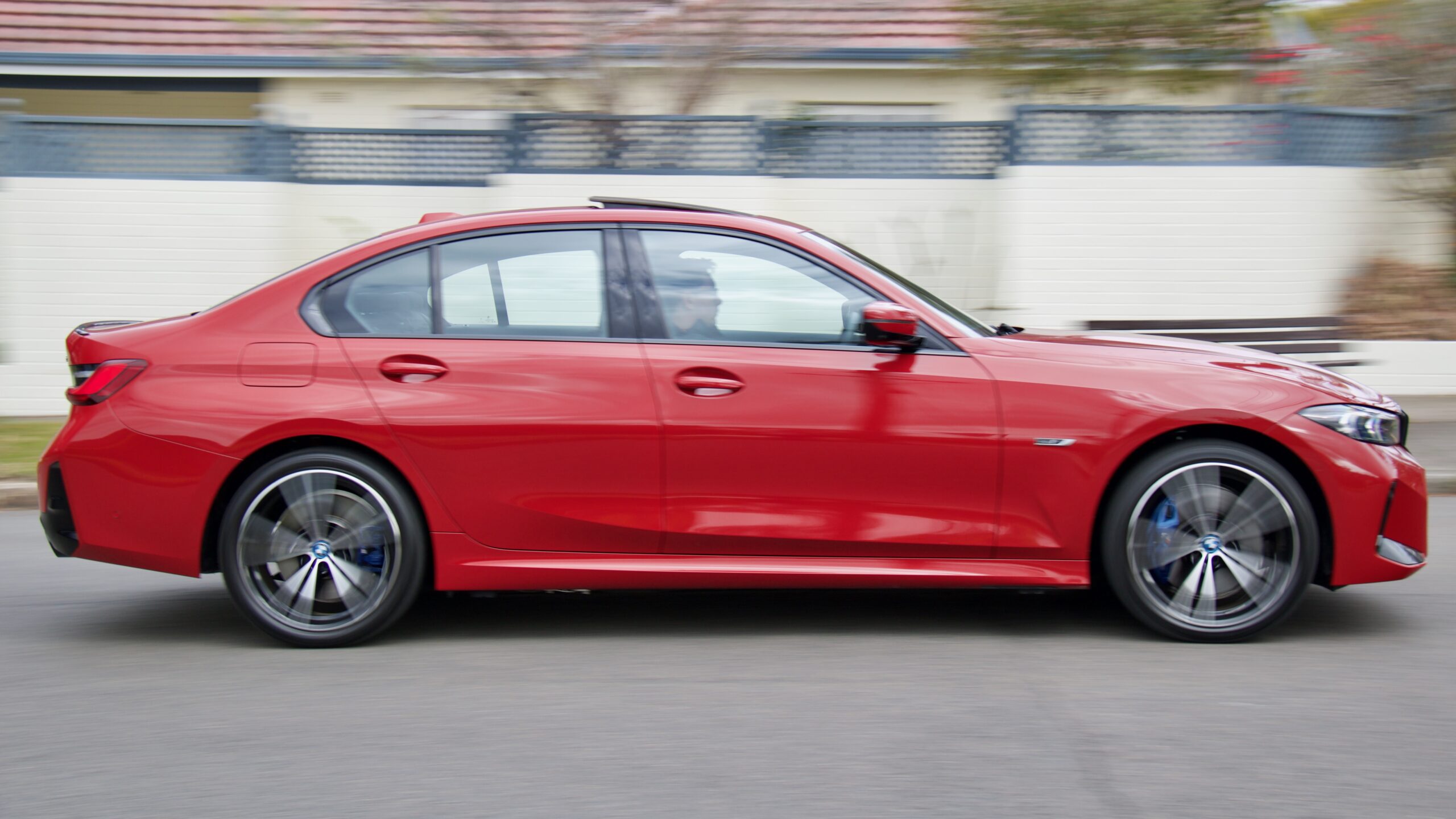
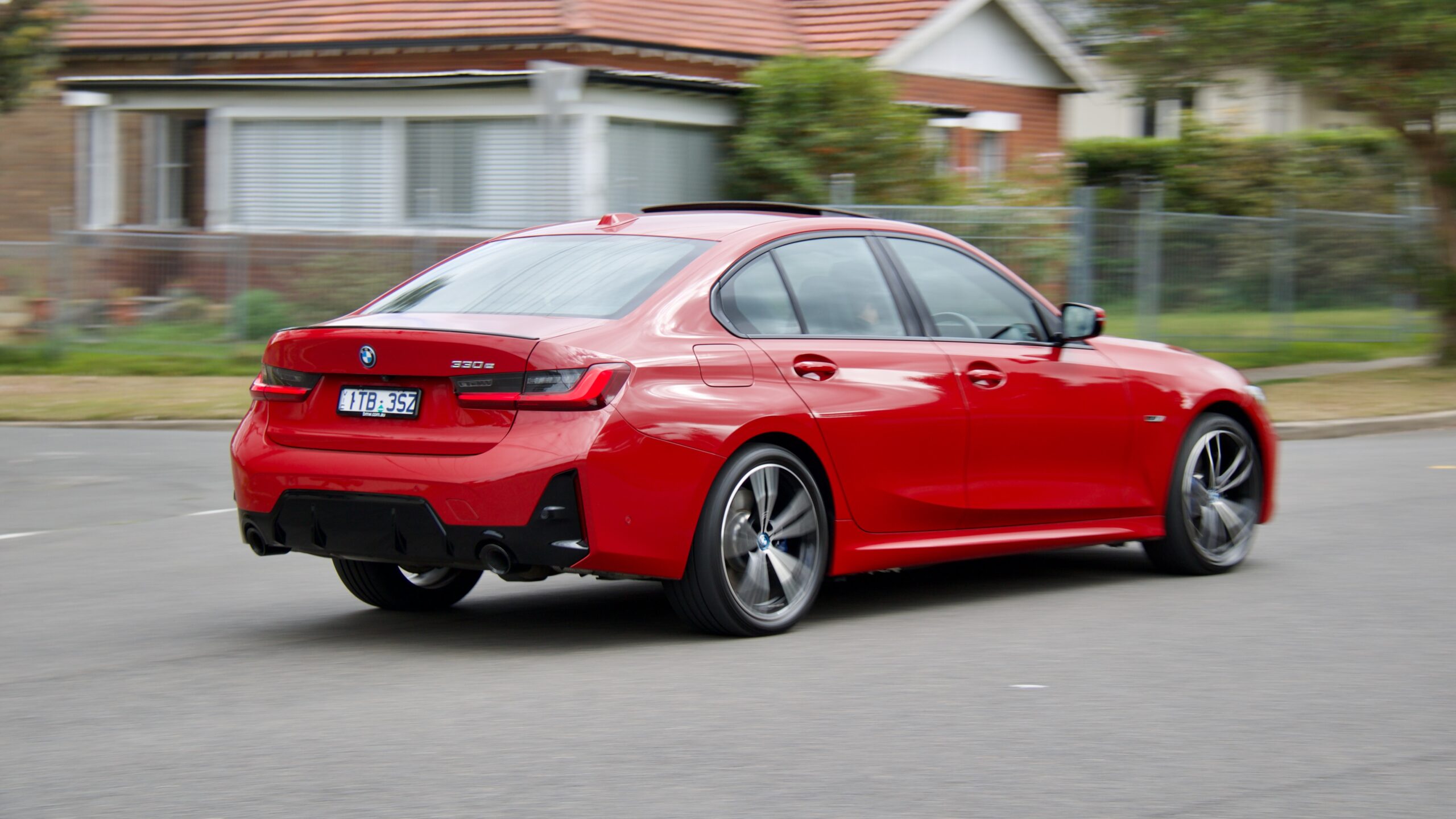
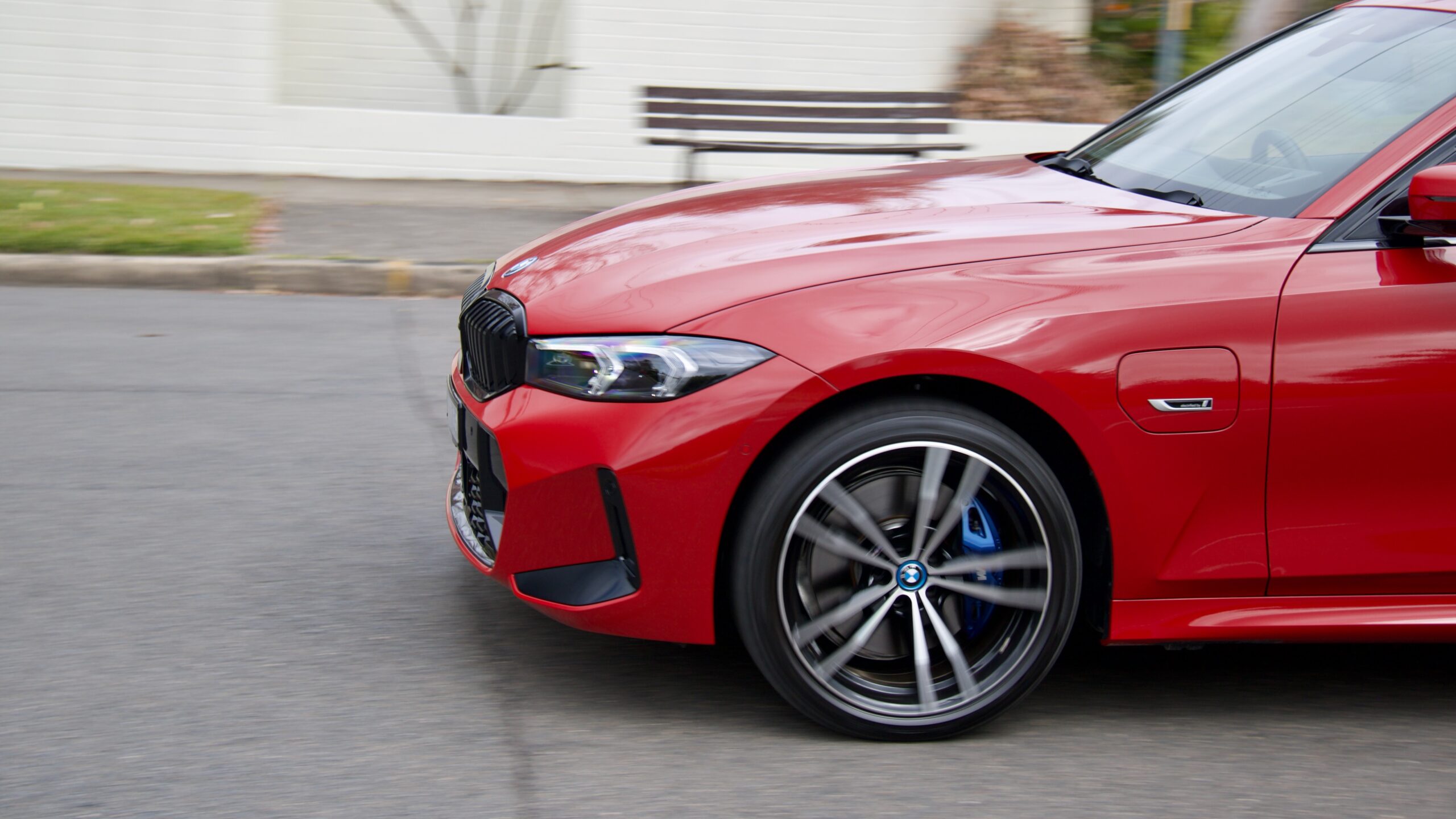
Because of that extra mass, the 330e’s handling isn’t Giulia sharp – or as sharp as a 330i or 320i either, it must be said – but it’s still a fun car to throw around. Its refinement is excellent, with great noise suppression, and its active safety equipment is also nicely tuned and effective. The 330i and above get BMW’s level two autonomous highway driving functionality as standard, which we think works quite well, while the 360-degree camera is also excellent quality – we wish the reverse camera view wouldn’t move when you turn the steering wheel though.
Interior & Practicality: 8/10
As you’d expect for one of the most iconic names in the car business, the interior of the 2023 BMW 330e is largely a standard setter in the premium mid-size sedan segment. Thanks to its high quality materials, solid ergonomics, well integrated tech and seemingly endless features, the cabin of the 330e presents well. It’s also reasonably spacious, nice to look at and nice to touch as well and it makes you feel good.
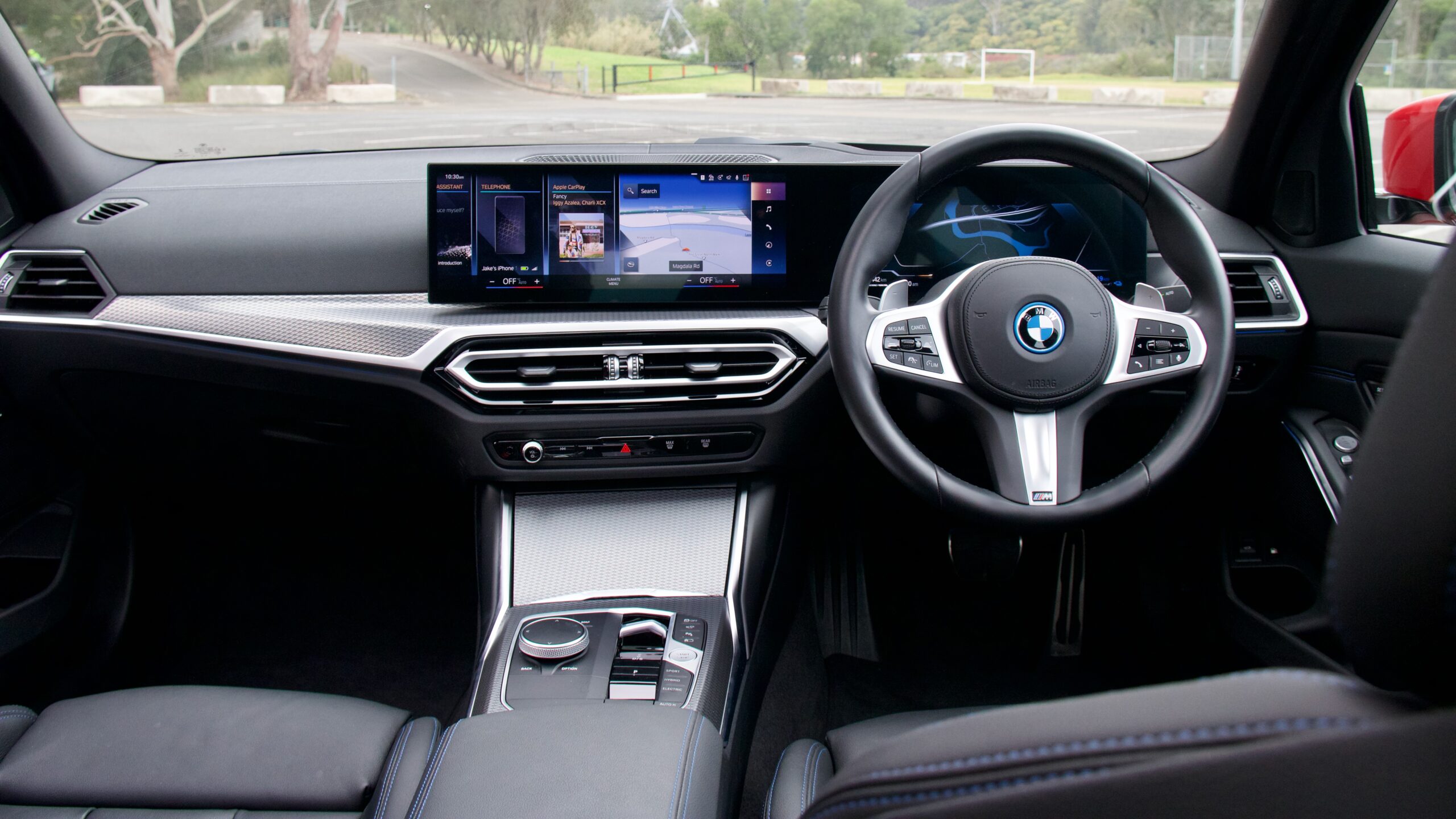
Centre of the 3 Series’ cabin is a huge 14.9-inch touchscreen with a plethora of features: live services like weather and news, wireless Apple CarPlay and Android Auto, navigation with live traffic and digital radio. The screen features BMW’s latest iDrive 8 operating system, which can be initially overwhelming to learn thanks to the sheer amount of features packed in and some confusing menus.
The menu layout is not as intuitive as the previous operating system – which is still used in the 2 Series – though, unlike the X1, it at least has a wheel controller on the centre console for easier use while driving. But the screen quality is fantastic, the touch response time is quick and the curved display joining both the infotainment and driver’s display looks great as well. The standard 10-speaker sound system is reasonably punchy as well, though audio lovers will want the Comfort Pack for its excellent Harman Kardon unit.
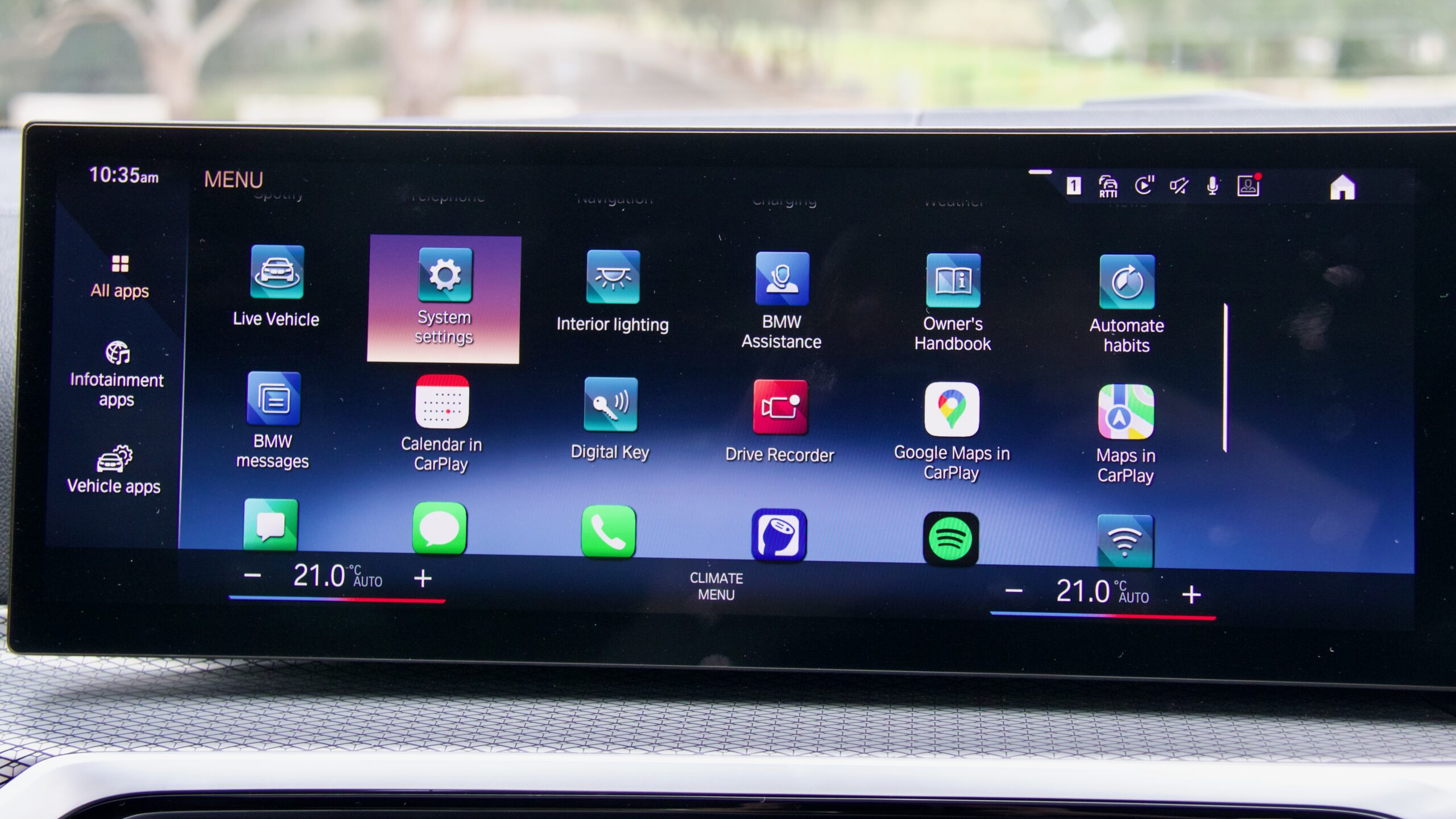
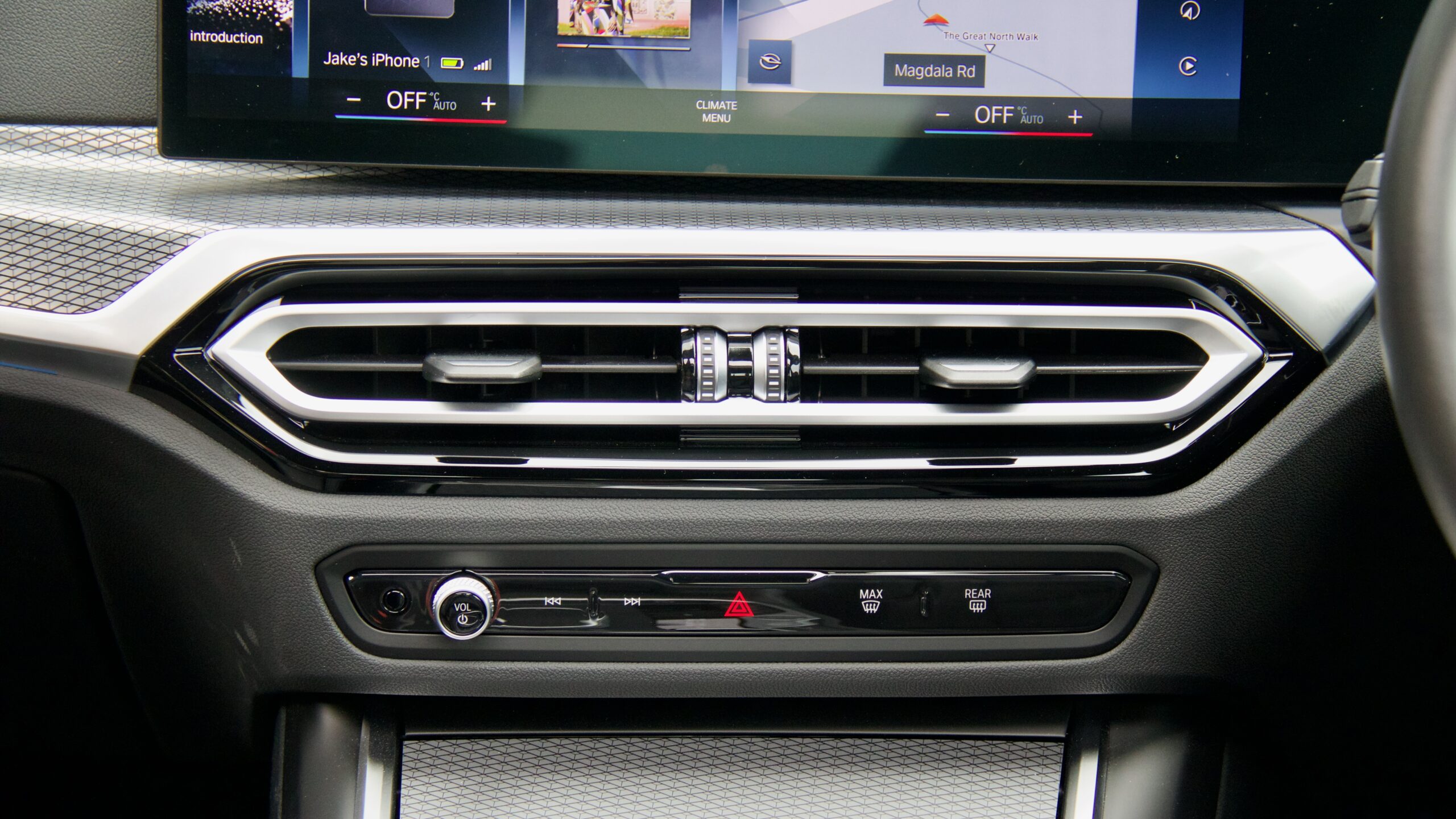
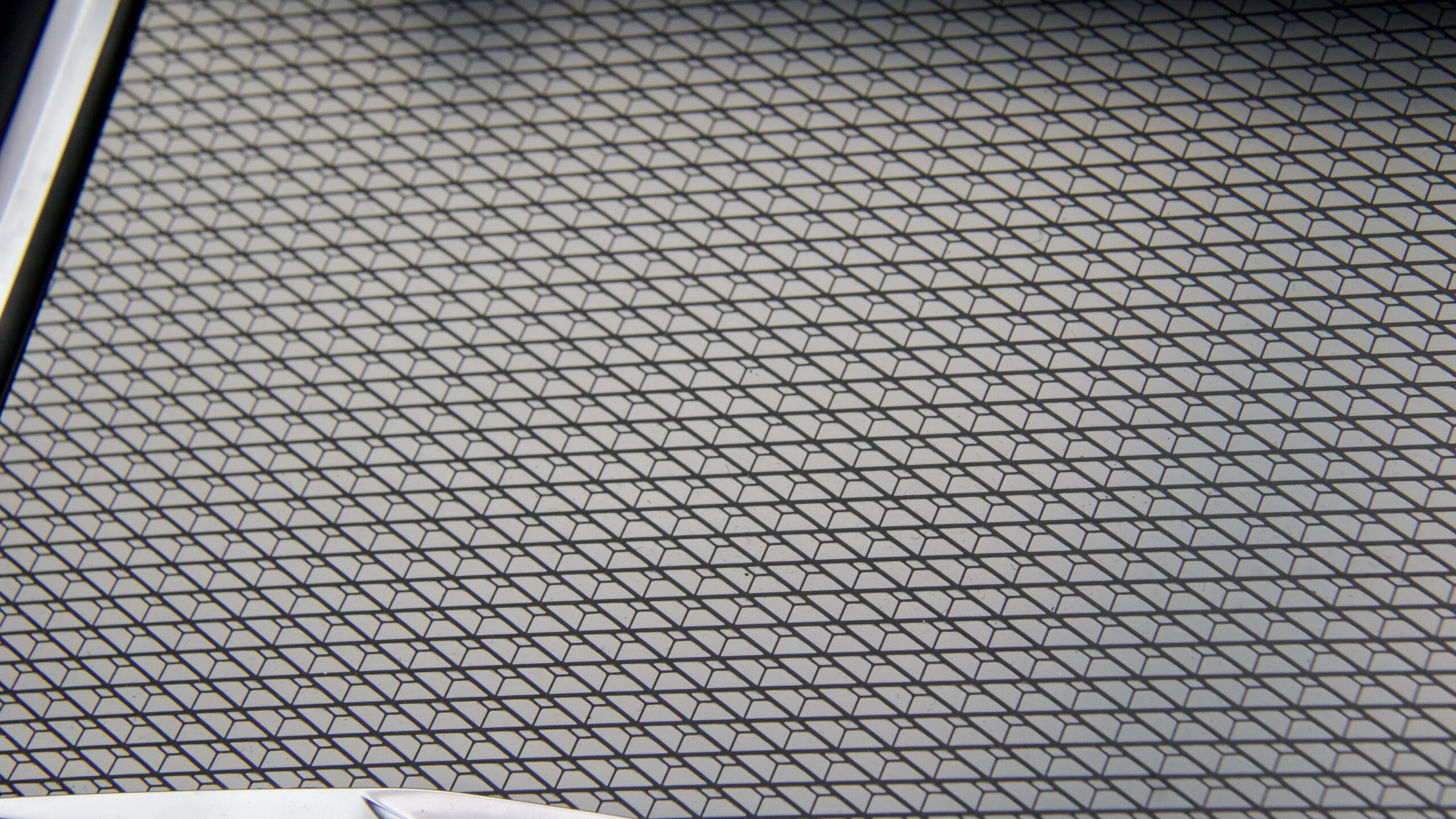
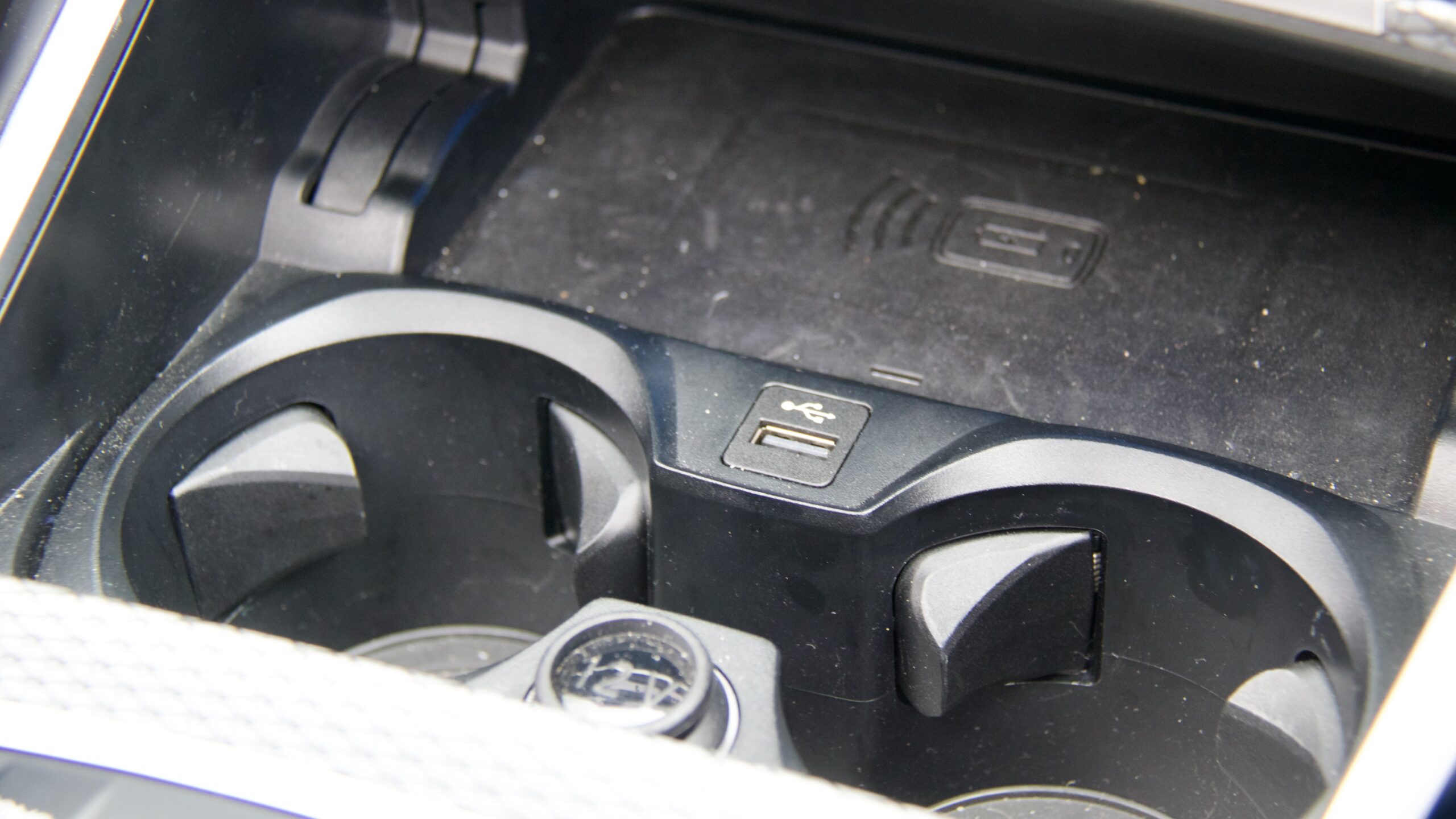
The storage inside the 3 Series is healthy too, with big door bins, a big box underneath the centre armrest, big cup holders in the centre console (where the wireless charger is) and a big glovebox too. There are three USB ports in the front – one USB-A mounted near the cup holder and a USB-C port in the centre box. The 330e’s front seats are quite comfortable and supportive as well, and feature a good range of electric adjustment – though heating is annoyingly optional at this price.
The rear seat of the 3 Series is reasonably spacious, though hardly huge – a Model 3 is far more spacious, for example. Six-footers will be quite comfortable as both leg- and headroom are reasonable – though toe room is non-existent – while the seats themselves are supportive and it’s a well featured space with a centre armrest with cup holders, door pockets, a separate climate zone and two USB-C ports. There are also two ISOFIX ports on the outer seats and three tether points for child seats.
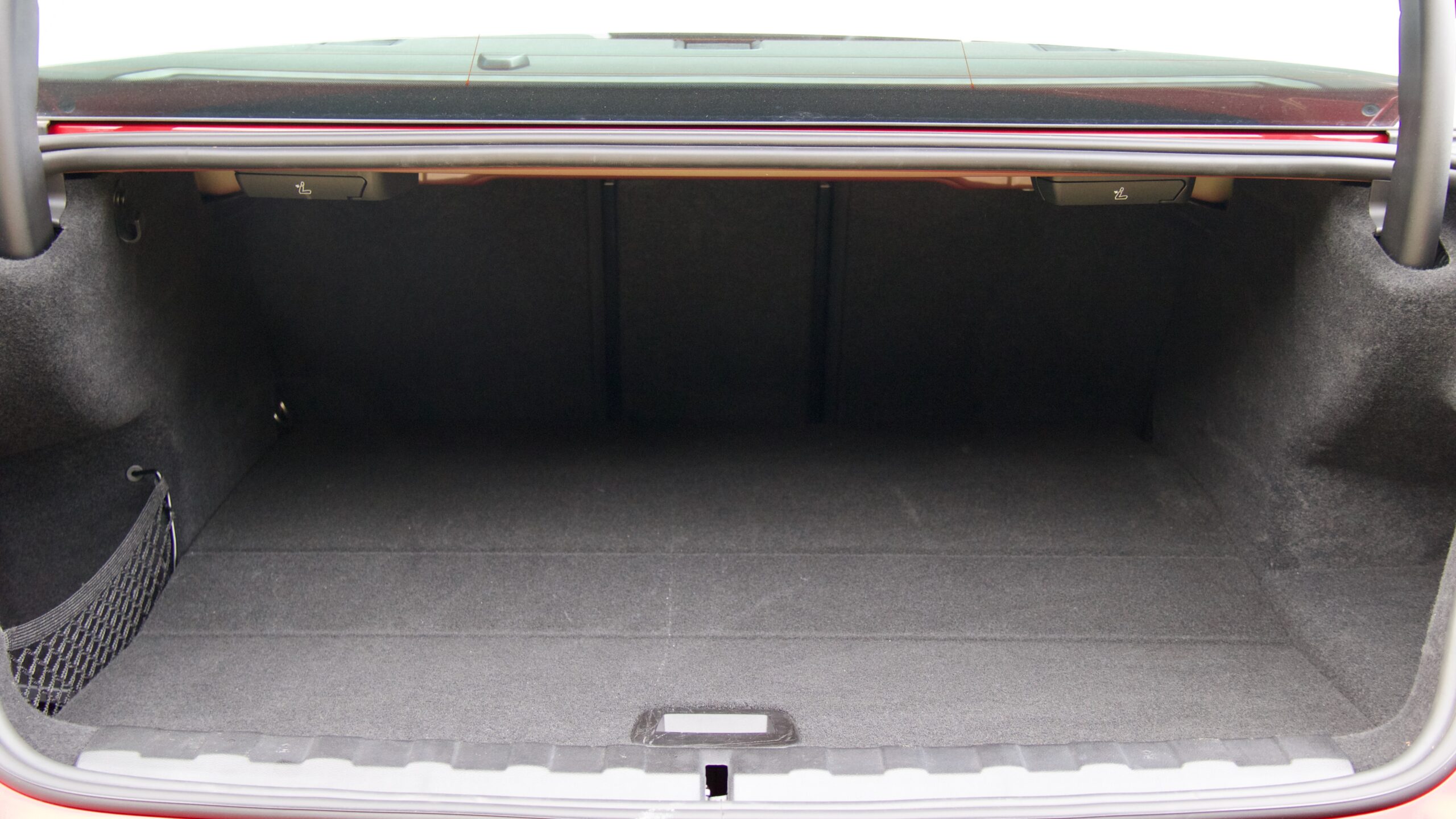
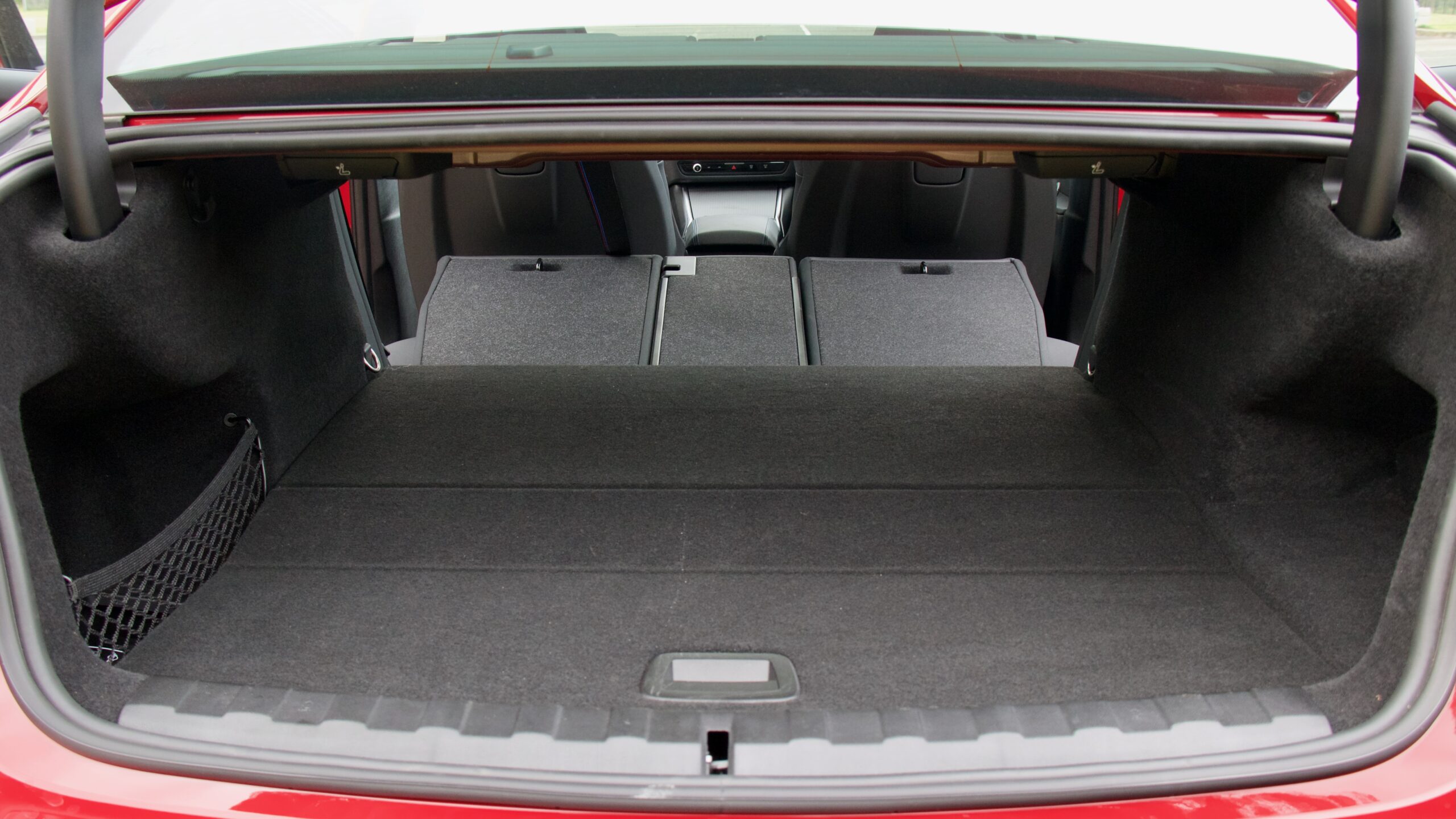
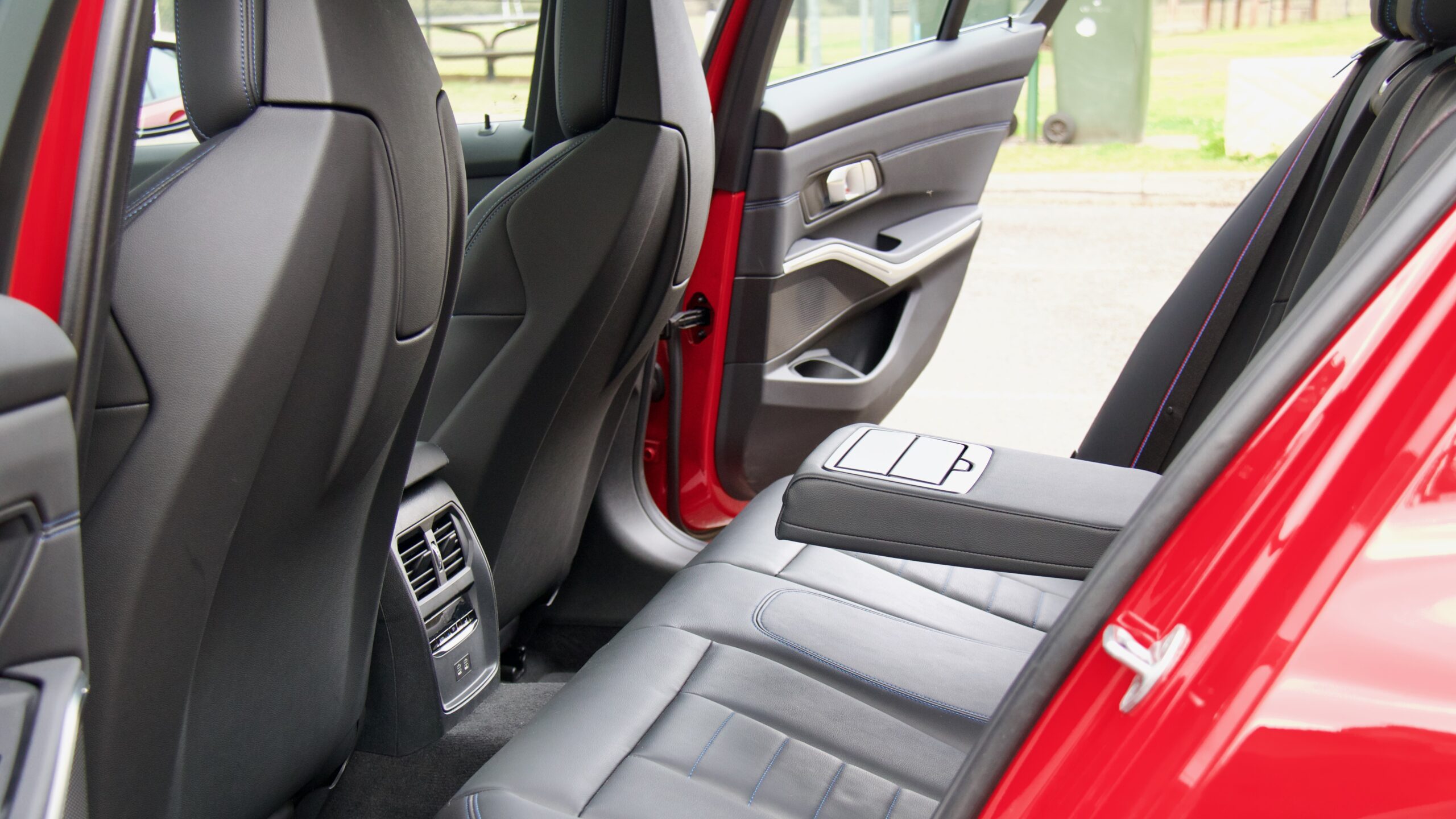
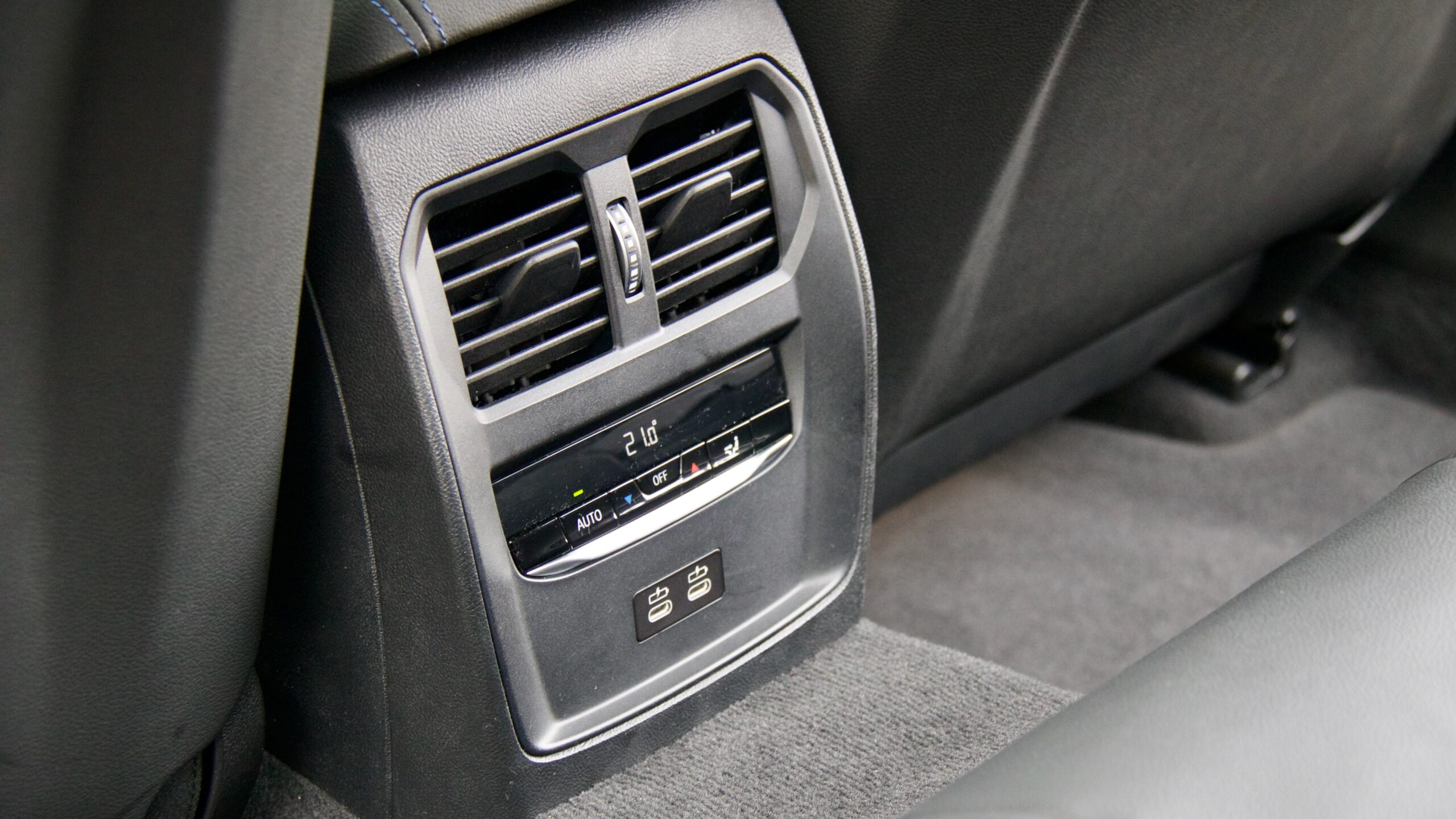
The boot of the 2023 BMW 330e measures 375-litres, which is 105L less than the regular 3 Series and thanks to the battery packaging, the boot floor is quite high. If you need more space, the rear seats fold in a 40:20:40 split for more space but there’s a big gap between the now-higher boot floor and the height of the seatback once folded. As with a regular 3 Series, the boot has a few features like side- and underfloor storage, but there’s no spare wheel.
Service & Warranty: 8.5/10
Like the greater BMW range, the 2023 BMW 320i is equipped with a five-year/unlimited km warranty with only three years of roadside assistance – but an eight-year/160,000km warranty for the battery. BMW doesn’t quote service pricing, but a five-year/80,000km service pack is $2,150 ($430 per service). The 3 Series has condition-based servicing that will inform the driver when it needs servicing, but once-yearly/every 15,000km is given as a general guide.
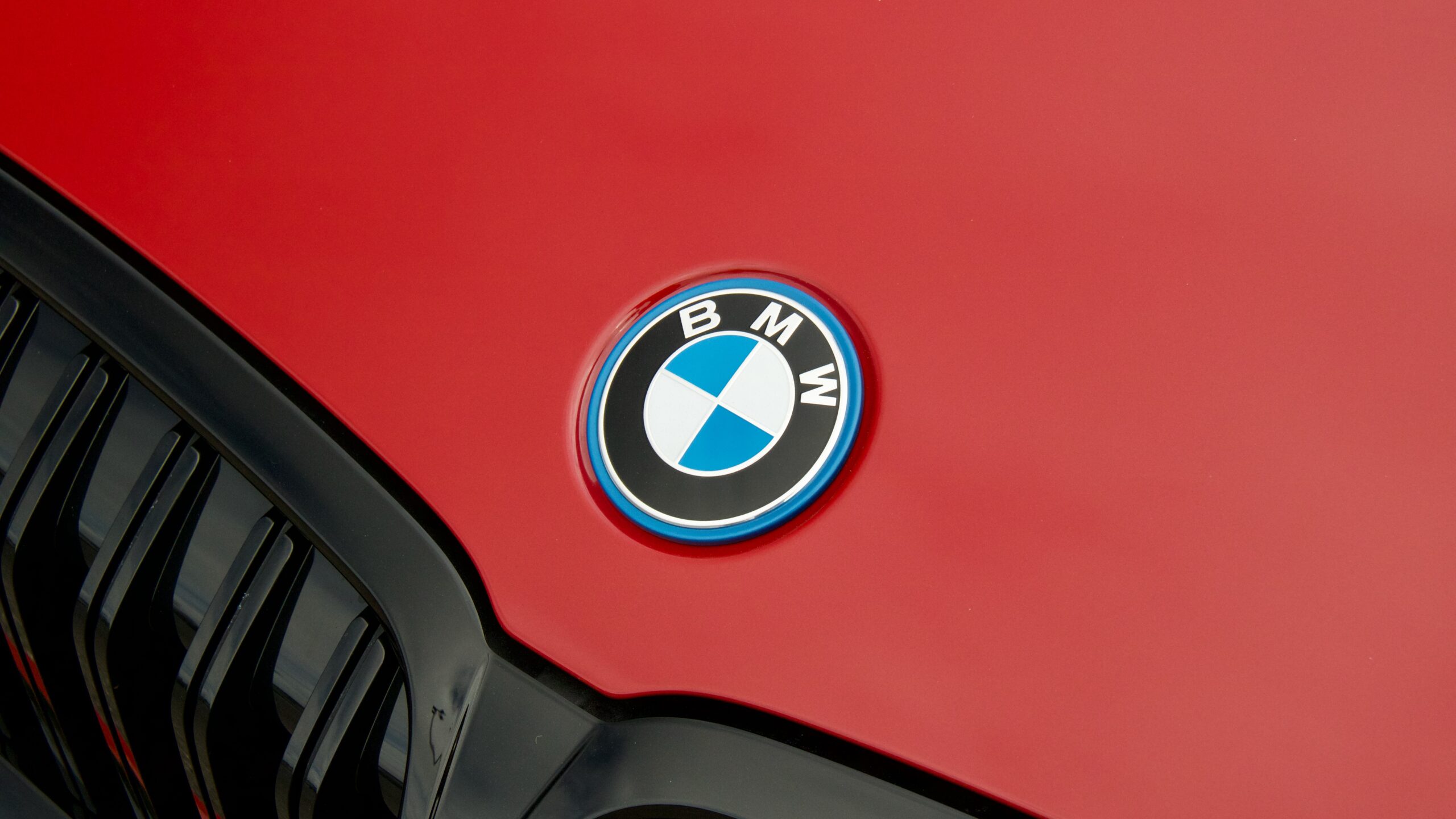
Rivals offer fairly similar aftersales support to BMW – Peugeot gives you five years of warranty with five years of roadside assistance, as well as the same eight-year/160,000km battery warranty, for example. Five years of servicing it costs $2,100 ($420 per year) through a pre-paid service pack. Tesla gives you a four-year warranty, while Hyundai and Polestar cover their cars with five-year warranties – Polestar even includes servicing for the duration of the warranty too.
The 2023 BMW 330e DiscoverAuto Rating: 8.0/10
Overall, it’s difficult not to be impressed with the 2023 BMW 330e thanks to its level of polish, class, character, solid driving dynamics, great quality interior, endless list of technology and overall likability. There’s no wonder that it’s one of the one’s legendary cars and that it’s lasted so long in an ever-changing automotive industry.
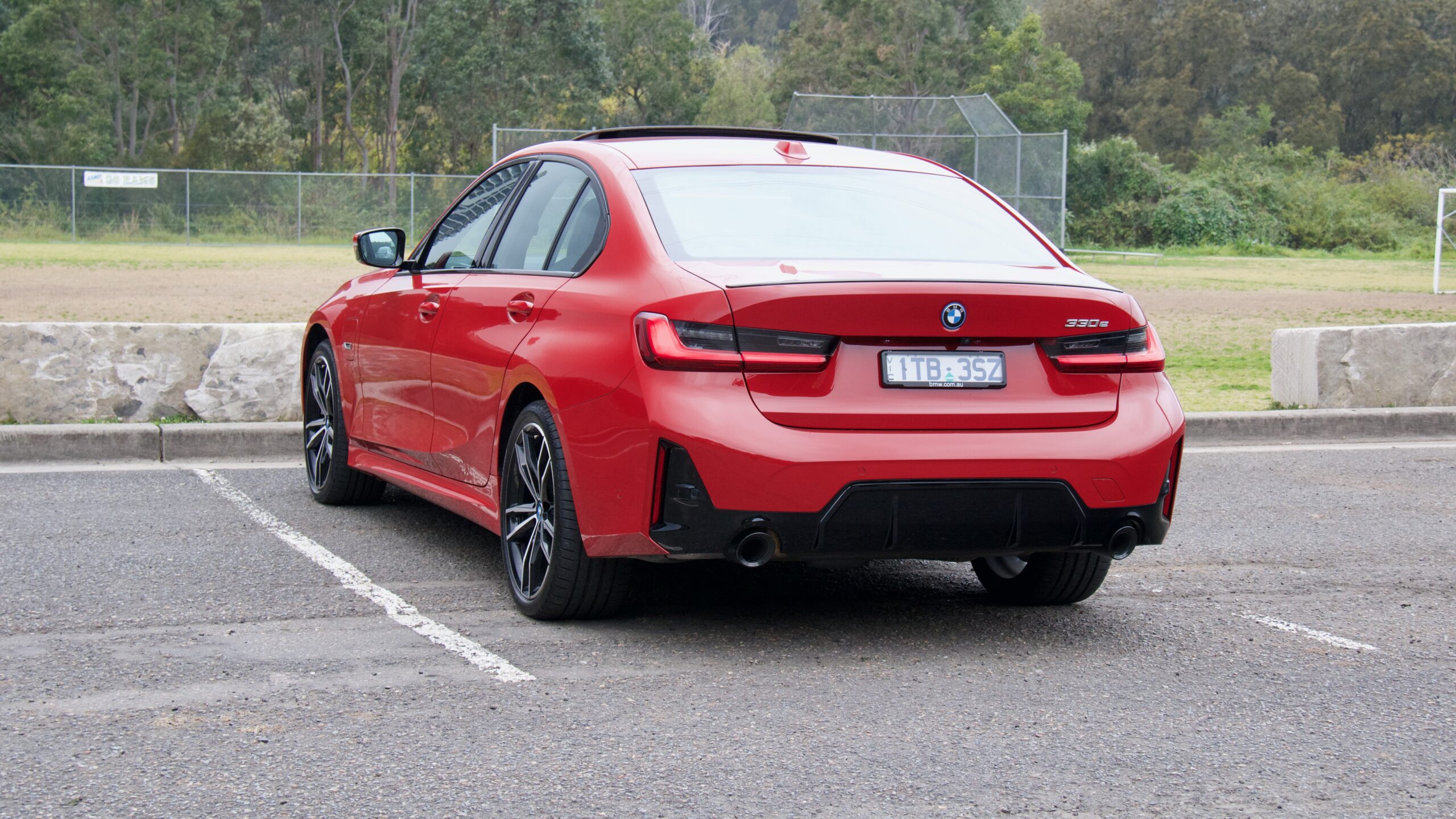
The 330e – and most other plug-in hybrids – may not appeal to you because of your situation. If you’re able to charge overnight, use its around 40km of electric range and not have to worry about its lack of DC charging, it will work quite well for you. But if you’re unable to charge it, or your budget doesn’t extend to its asking price, then there are better options out there. Then there’s how the PHEV drivetrain compromises the boot and its added weight dulls its dynamics compared to the 330i. But if these issues are no matter to you, the 330e presents compelling buying as any variant of the 3 Series range is a great car – just do your research before committing.
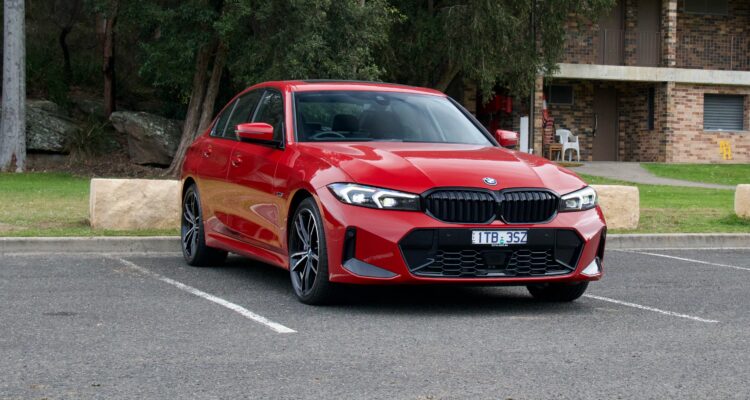
Leave a Reply